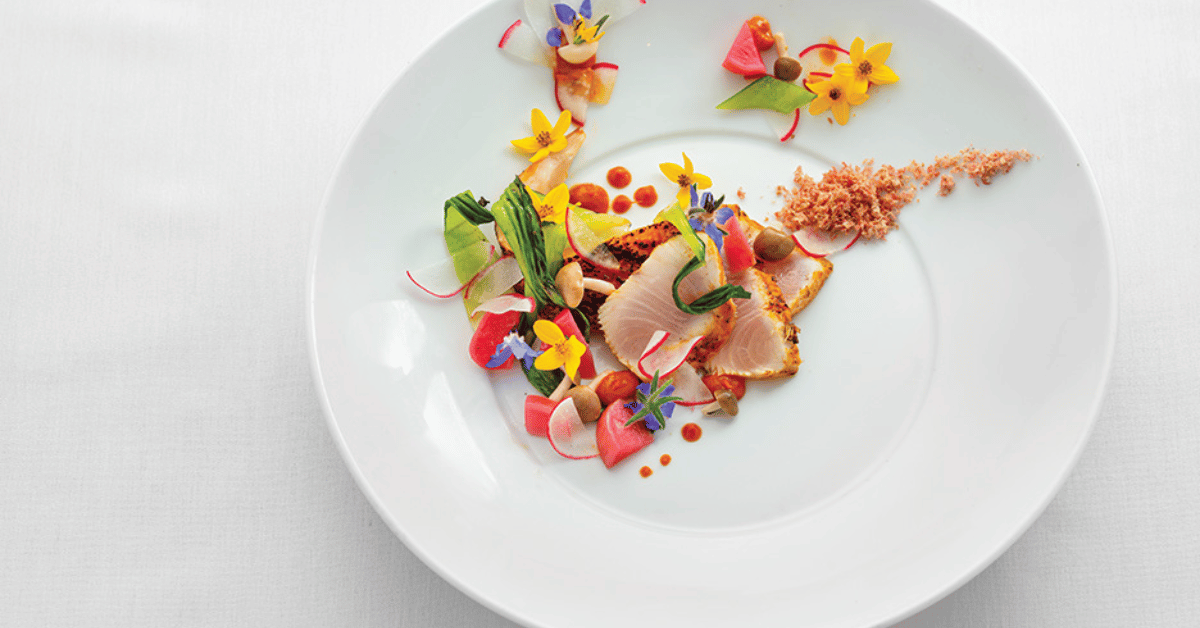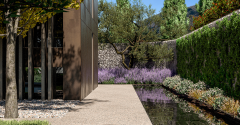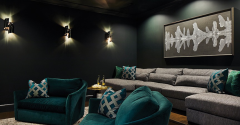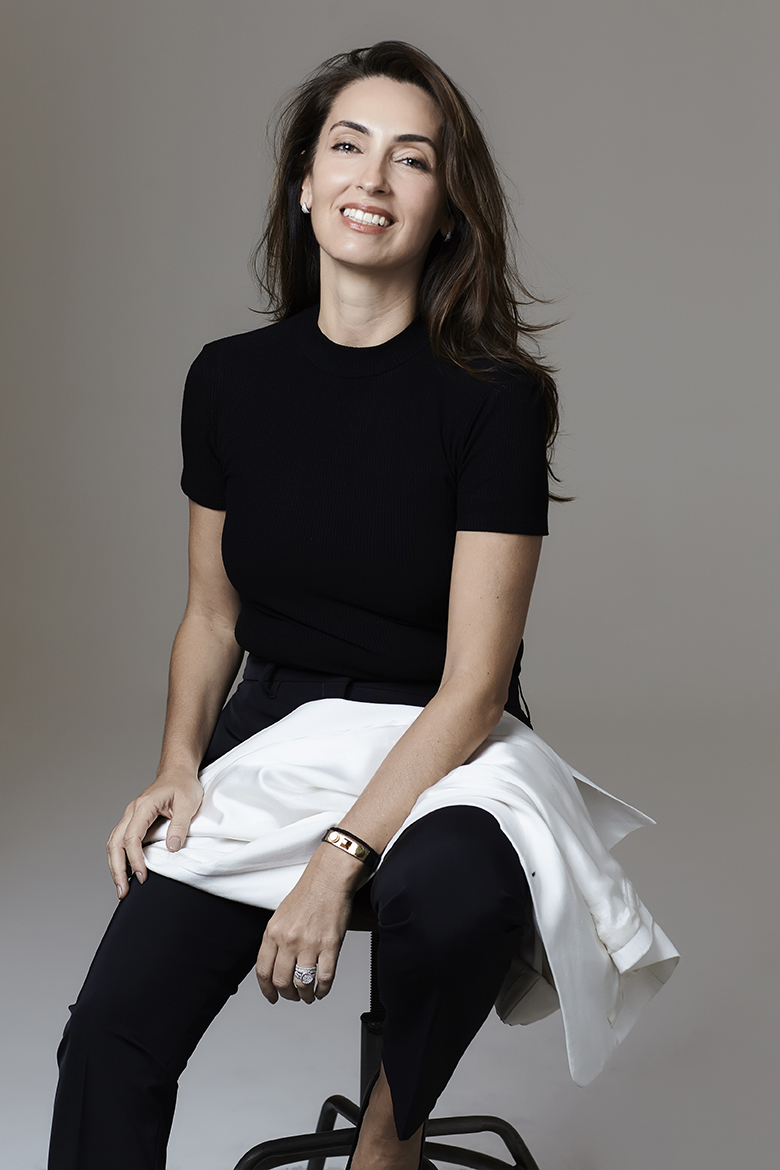
Headshot courtesy of Victor Affaro
From the Jumby Bay private island in Antigua to the palatial Palacio Tangara hotel in Sao Paulo, Brazilian architect and designer, Patricia Anastassiadis has collected a long, robust list of high profile international projects. Anastassiadis blends her love for anthropology, art, nature and history to create timeless and minimalist furnishings that create a dialogue.
Most recently, she was chosen to be the Creative Director to design Artefacto’s highly-anticipated 2019 collection, which hit South Florida showrooms this past summer. Unique Homes spoke with Anastassiadis to discuss her journey to create Artefacto’s 2019 collection, her style and the future of design in a changing world.
What was the first time that you ever thought about being a designer? Did it coincide with your original career path?
As a child, I was always put to sleep listening to Greek Mythology stories told by my father (who is Greek) and that exposed me at a very early age to the power of storytelling and the classics. My mother, on the other hand, is a fashion designer, a writer, and a painter. So as a teenager, I’ve always known that I would take part in the creative business … At 17, I decided to apply for an architecture major as we’ve realized that architecture has always been a reference and a part of my life.
Why do you do what you do? What about interior design draws you into it doing it every day?
Architecture itself tells a beautiful story about our time on this planet and the relationship we establish with our surroundings. That idea completely amazes me.
I don’t make a distinction between my work as an architect and my work as an interior and product designer. They are all extensions of my work. For me, it is all connected as I enjoy working with design on different scales, but most importantly, I like living with the idea of creating something that puts you in contact with another human being.
How would you describe the style of the new Artefacto collection?
This new edition is the continuation of the previous one launched in spring 2018 and our aim was to promote a dialogue between the two of them. I believe a good design piece ruptures its timeline without losing its aesthetic or functional relevance. Thus, my intention with this edition is to design furniture that is truly timeless. We are proposing a more holistic aesthetic linked to values that, despite the strong visual appeal, are not a synthesis of a trend.
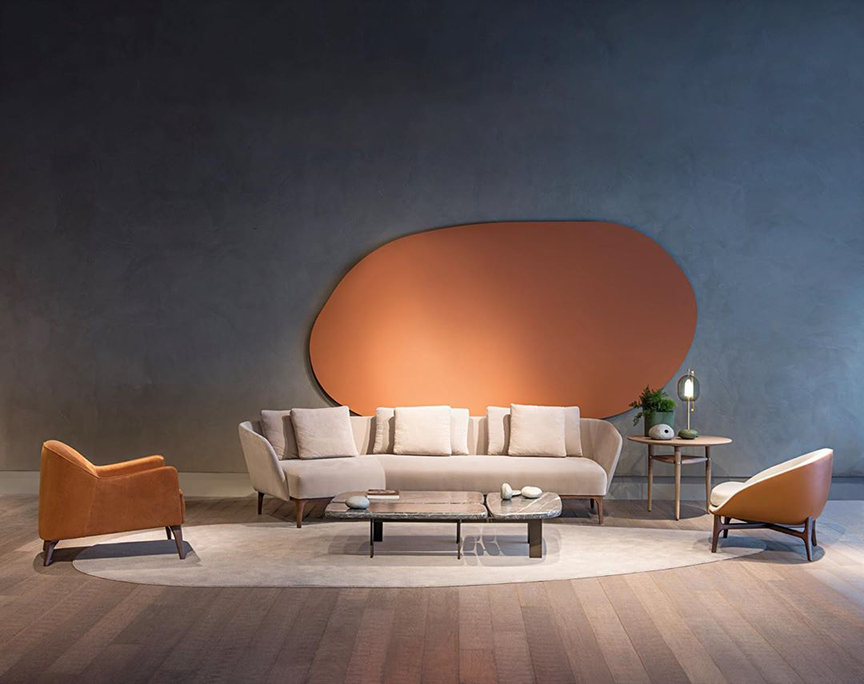
What do you draw inspiration from to form your own unique perspective?
My inspiration comes from nature, materials, architecture… All those different elements are part of the repertoire that moves me to create and design products of my own.
What can a client expect from you when you take on their project?
What marks our work is how we evaluate the location where the project will be held. I take into account the cultural characteristics; the local materials we can work with; the vernacular architecture of the place, and how people interact with it or behave there… I also really enjoy exploring and connecting materials, textures and colors… The aim of my work is to turn it all into an enhanced experience that will bring out the real essence of that location to visitors.
What recent changes in the industry have you noticed and want other designers to take part in?
I’ve been really concerned with the environmental issues, and consumption plays a big part in it as we’re also discussing discard. I believe we’ve really passed the time where we could just raise a flag over the problems we’ve been noticing in the world as a consequence of our damaging exploration of natural resources. We’re right now sensing an imminent call for action regarding the environmental issues. Change really is urgent. It’s essential that we, as designers and architects, are able to engage in the cause and make conscious choices when developing a project.
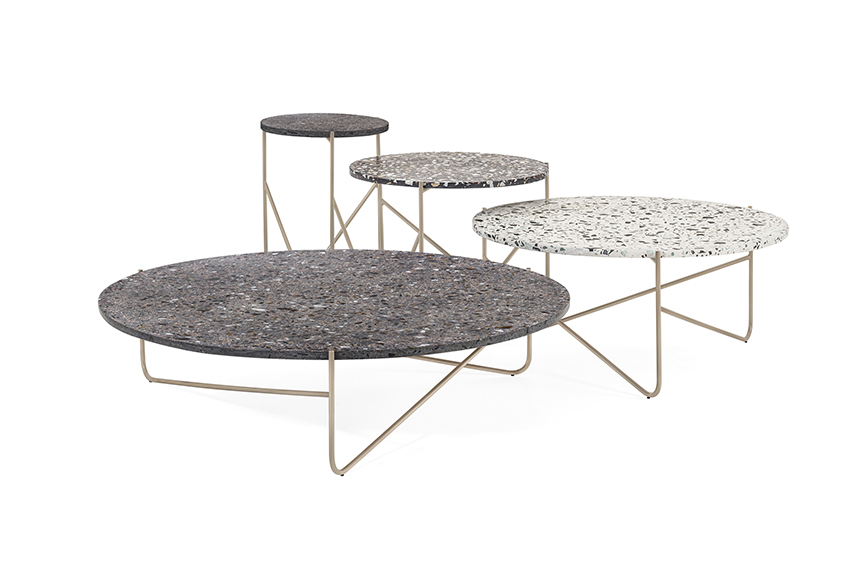
What can people expect from your new collection?
We’re now working with the concepts of a brand new edition. We’ve been inspired in the past by Japanese architecture, culture and design so we’ll keep developing that. We’ll also create a brand new chapter of furniture design with natural fibers and materials, inspired by food. We’ve also been experimenting with shape, adding volume to new pieces.
Any goals for this year, both for you and/or your brand?
Right now, I’m working on an upcoming Four Seasons hotel as well as a brand new collection of furniture design for Artefacto. There are new projects to be announced as well. But we can’t reveal much just yet.
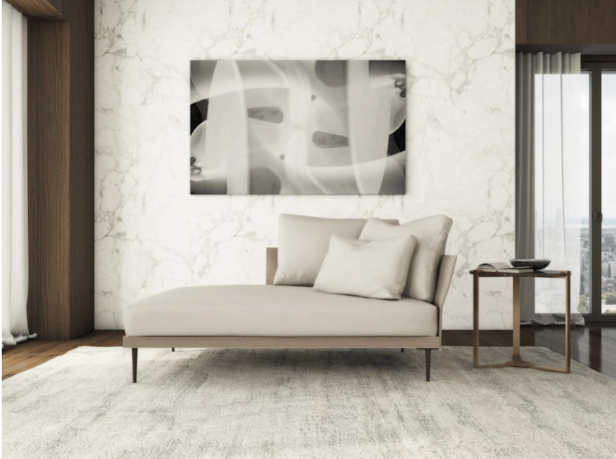
Photos courtesy of Artefacto
Over the past few years, stained glass has gone from a dusty antique item in an old home to modern works of art. With the industry making a comeback into the luxury scene, interior designers are challenging themselves to design a space around the ornate glass. Here are a few different ideas:
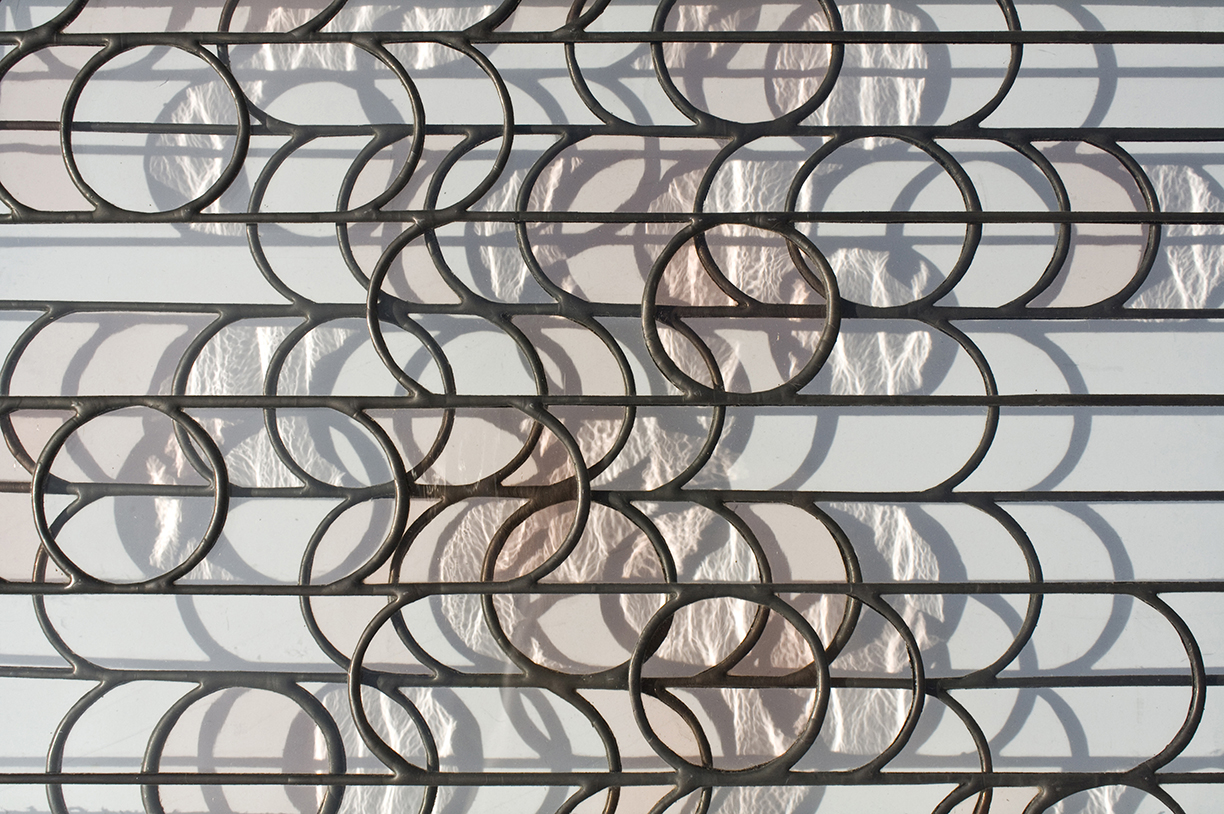
Photo courtesy of Bespoke Glass
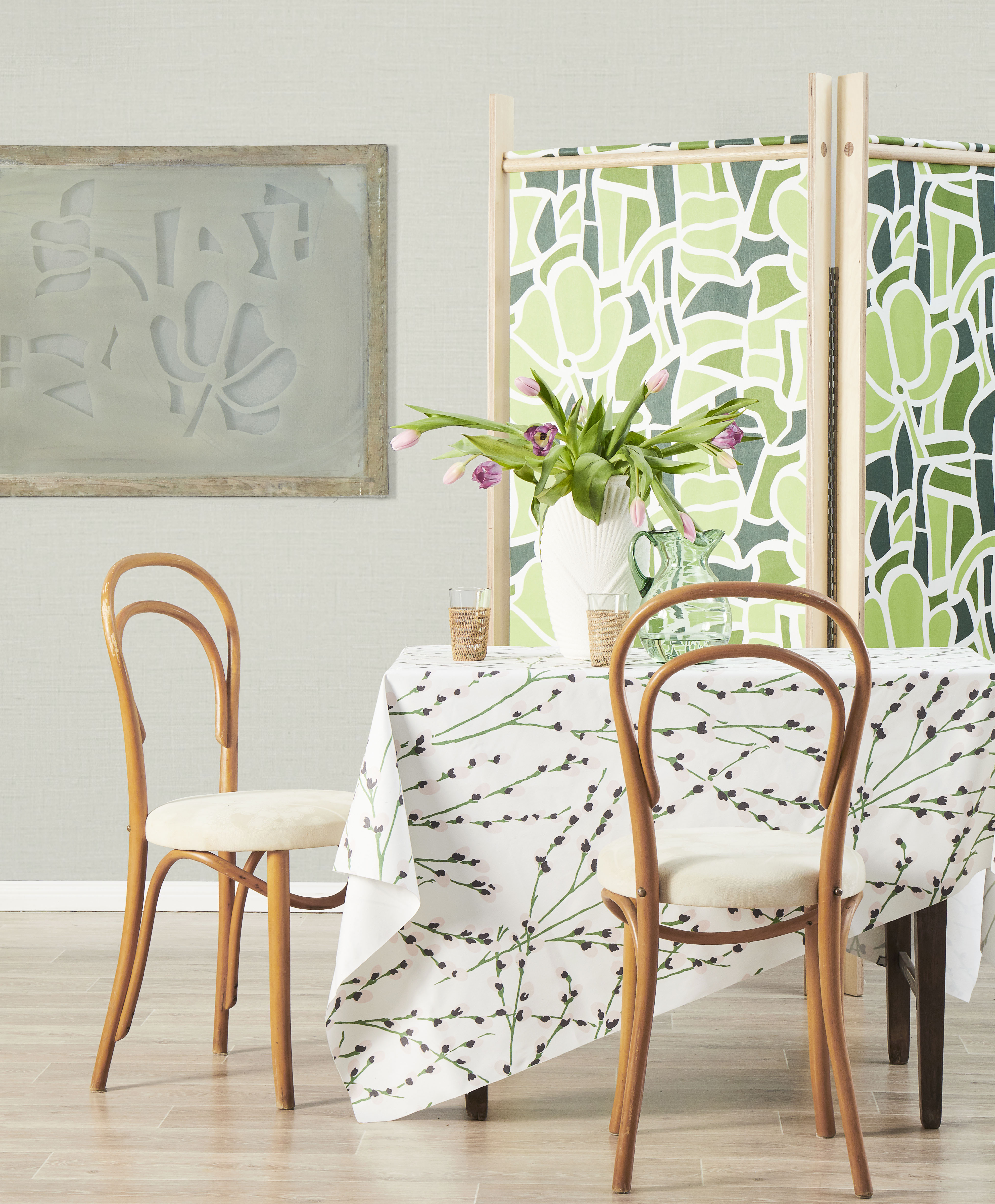
Photo courtesy of Florence Broadhurst Fabrics
Stained glass can add a pop of color and make your space feel both cozy and modern. The green colors on this partition add a bright finish to the room, making it the centerpiece for all the other furniture to gather around it. While still looking modern, it brings back an old-school style to provide a sense of comfort as well. Nowadays, adding a piece of stained glass to a home brings a unique style unlike any other — one that brings you back in time, while also staying ahead of the times, too.
Located in New Haven, Connecticut, the Blake Hotel adds a unique style to the space by featuring the work of Bespoke Glass, a studio-based business in Brooklyn, New York. The different shades of blue colors and the glimmer of the glass adding a retro look that transports you to a different time in the past, while also staying current and on-trend. The placement of the blue pieces adds an edgy and one-of-a-kind appearance. Not only is it a partition, but it’s a work of art in its own right.
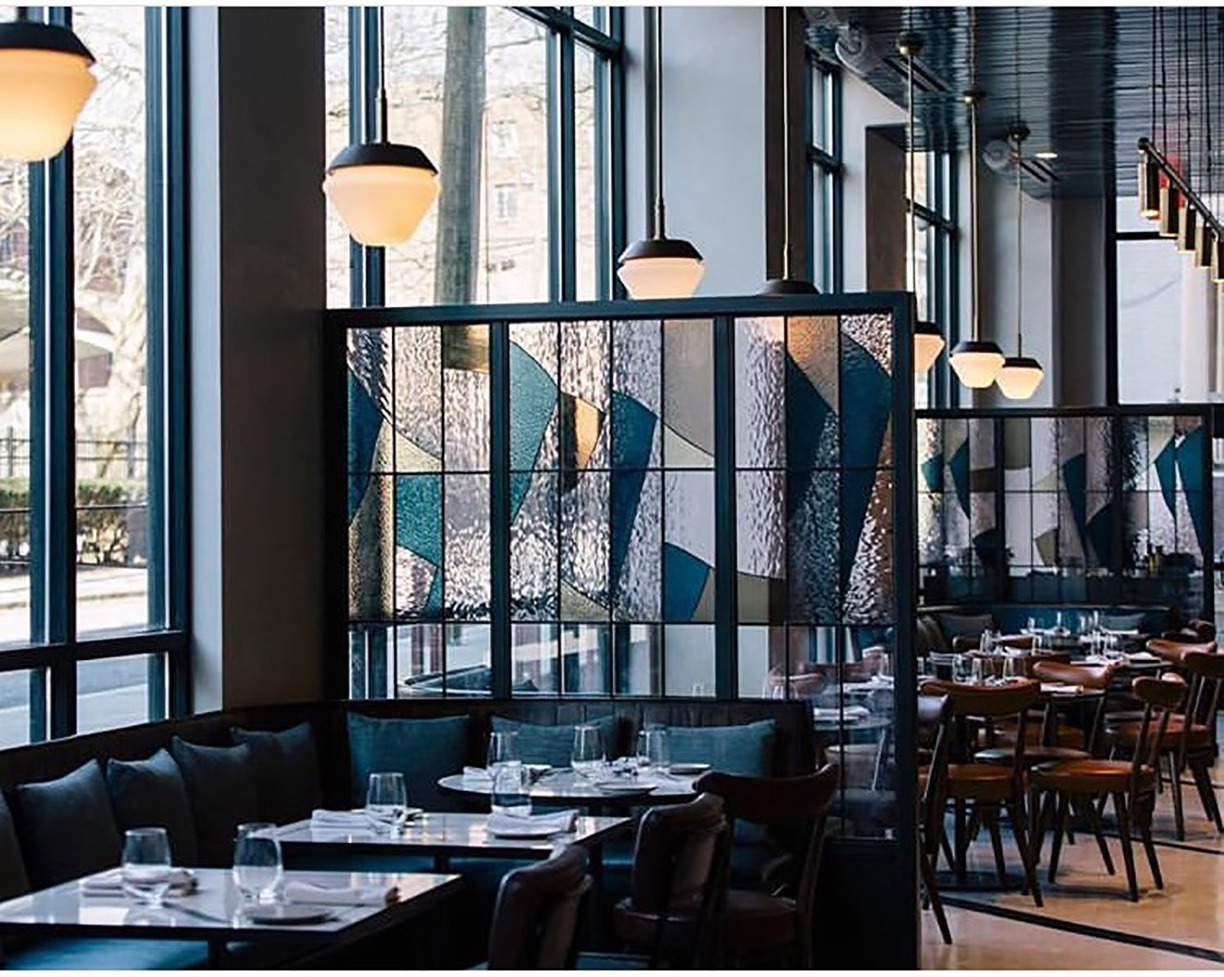
Photo courtesy of Reed McKendree
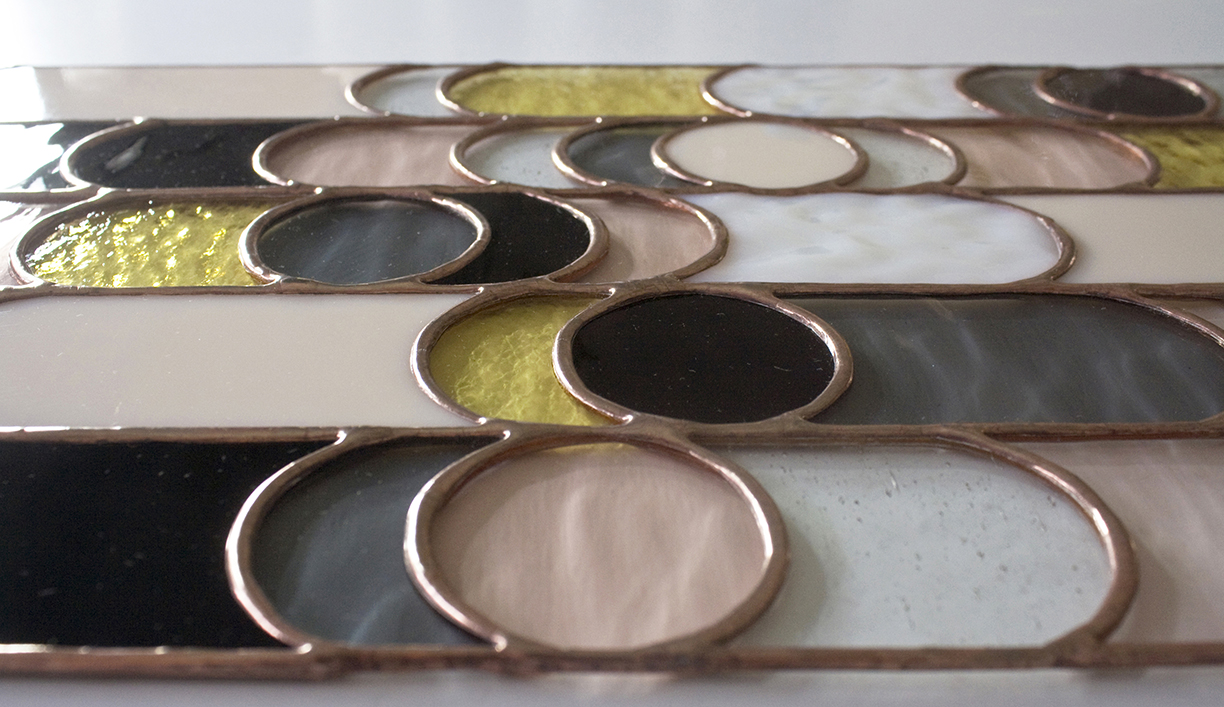
Photo courtesy of Bespoke Glass
By changing the designs stained glass was normally confined to in the past, studios and interior designers around the globe are beginning to take out the dusty antiques from their storage bins and create works of art instead. With so many different styles and colors, the possibilities are endless.
While dark-colored walls can add a depth to a room, it can sometimes be tricky to style around them. Every dark-colored wall brings a heavy tone with it, and it’s important to know how to design the space so has a balanced tone. While it’s a designer’s challenge, here are different rooms that prove it can be done:
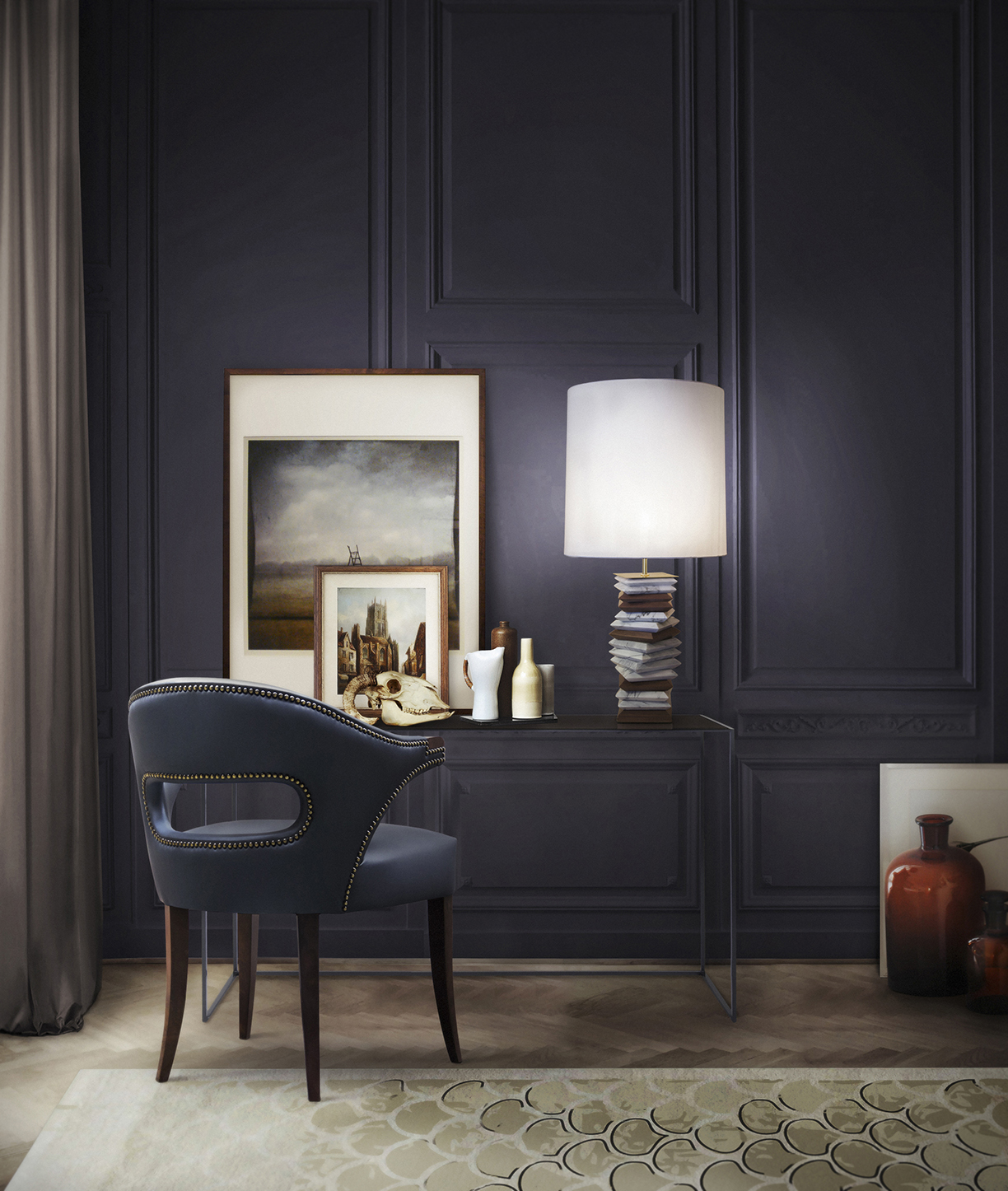
Photo courtesy of Brabbu Design Forces
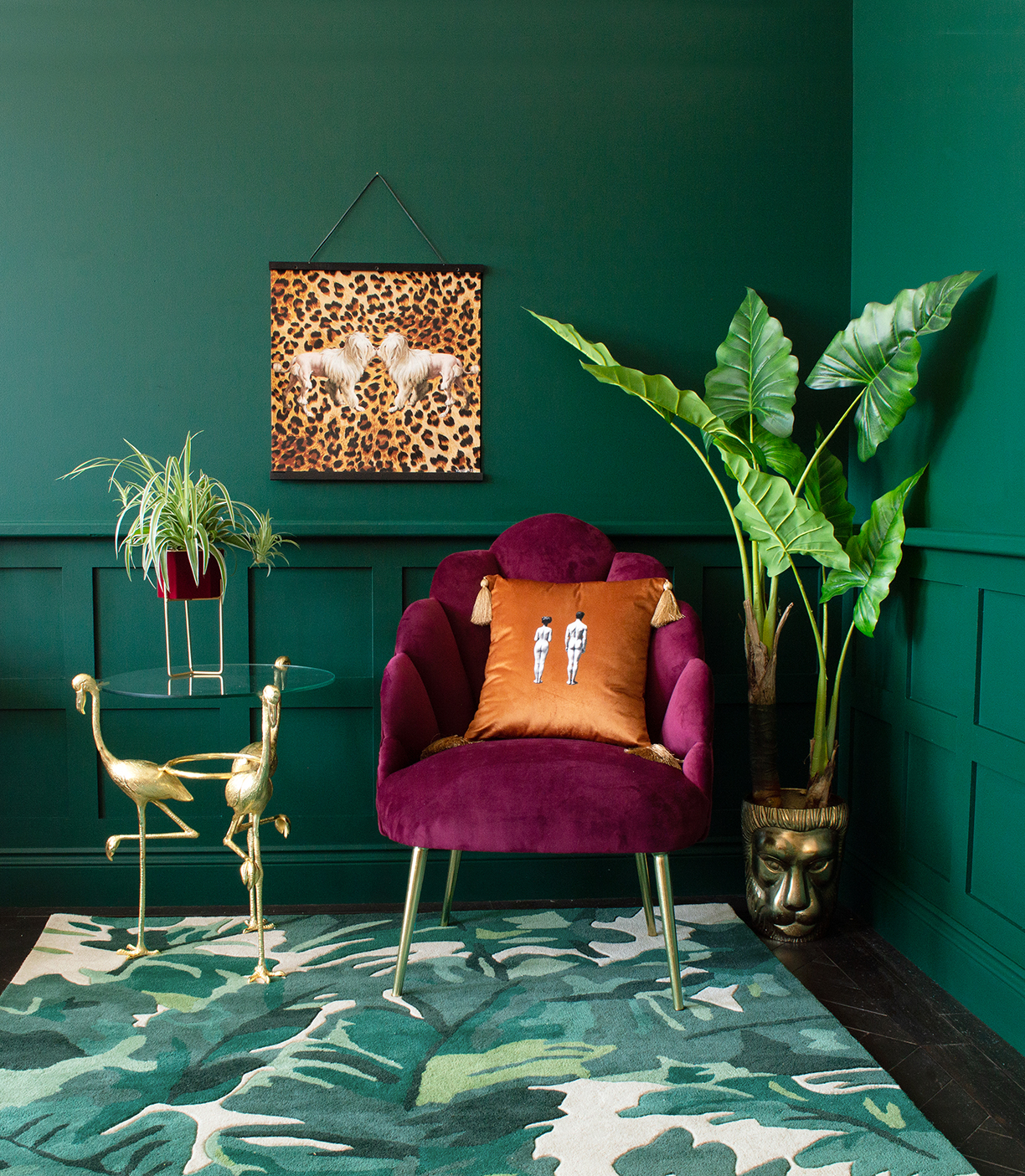
Photo courtesy of AUDENZA
1. Brighter Colors, Warmer Tones
When designing any room, it’s crucial to look at the colors you’ll be using and make sure they balance each other out. This is especially so for rooms with dark-colored walls. While they add a great tone to the space, too many darker tones can make a room feel cold and uninviting.
The perfect balance of colors involves a mixture of both darker and lighter colors, such as this bright red chair in front of a dark green backdrop. The chair adds a pop of color, making the dark colored walls feel warm and inviting.
1. Light versus Dark
Balancing the lighter and darker tones can be a challenge, since having too much of one can overwhelm and wash out the other. These baths represent the perfect balance of tones. The darker walls counteract against the polished bathtubs and light fixtures. This not only adds a great balance, but brings a rich and inviting depth of color to the room.
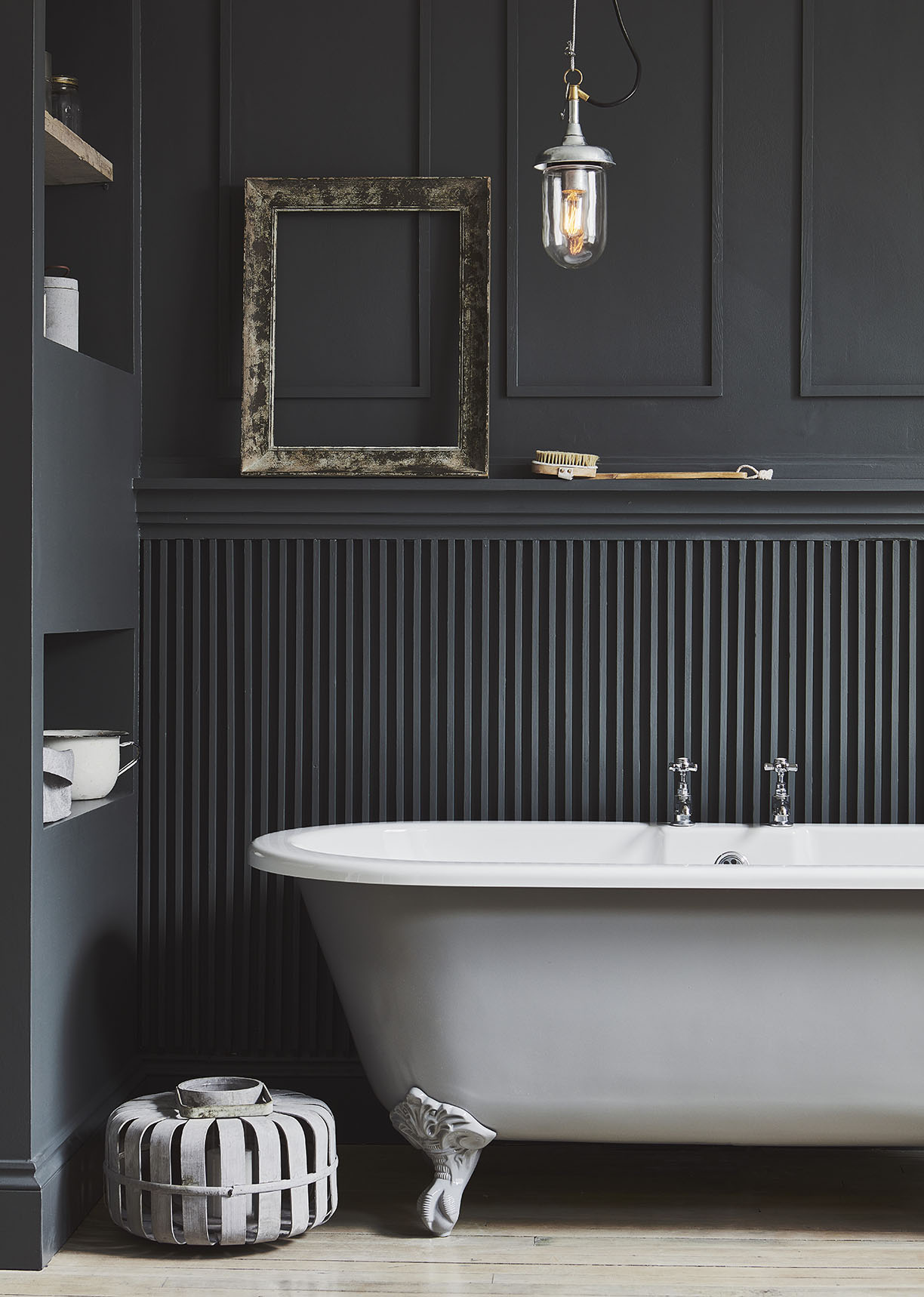
Photo courtesy of Garden Trading
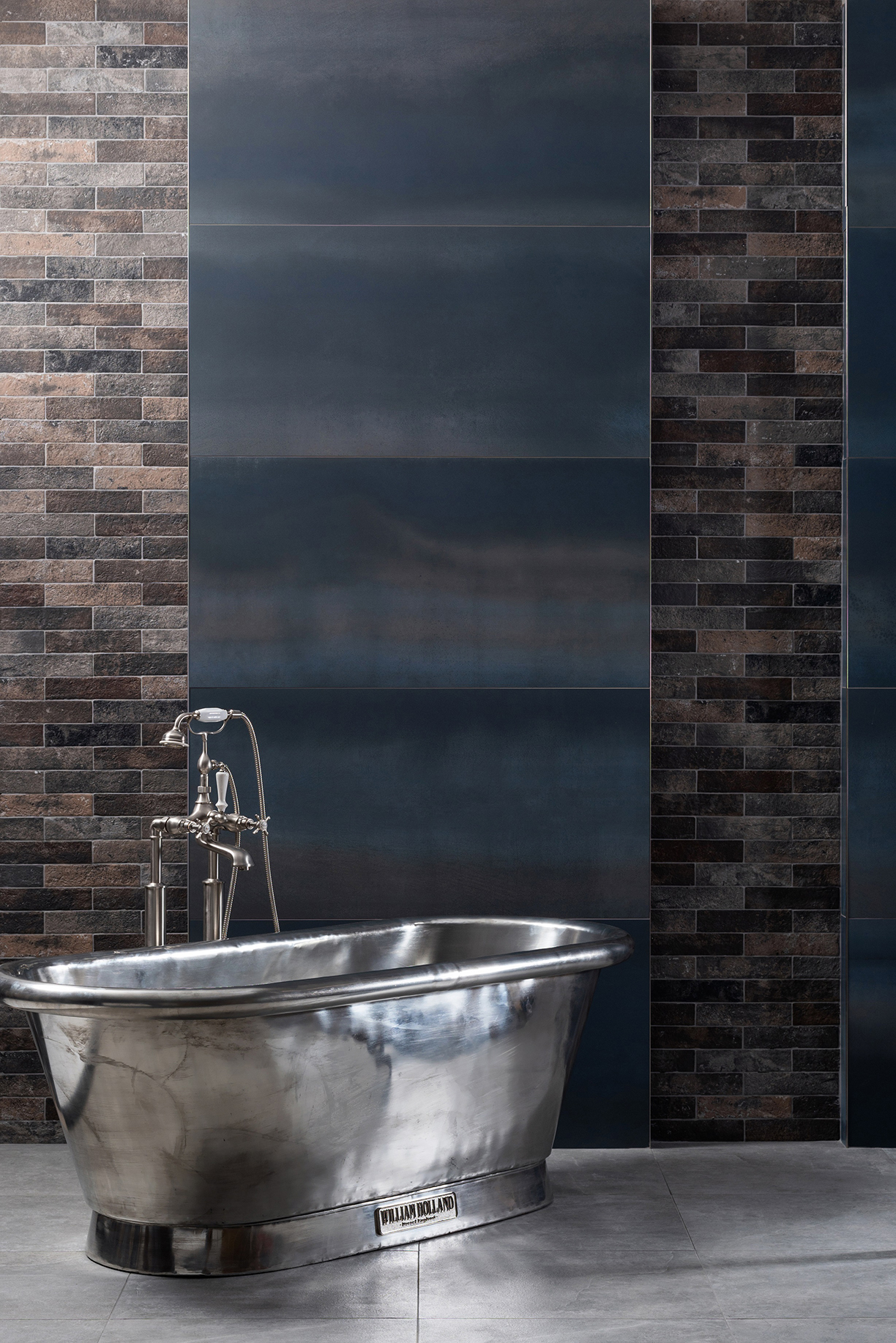
Photo courtesy of Original Style
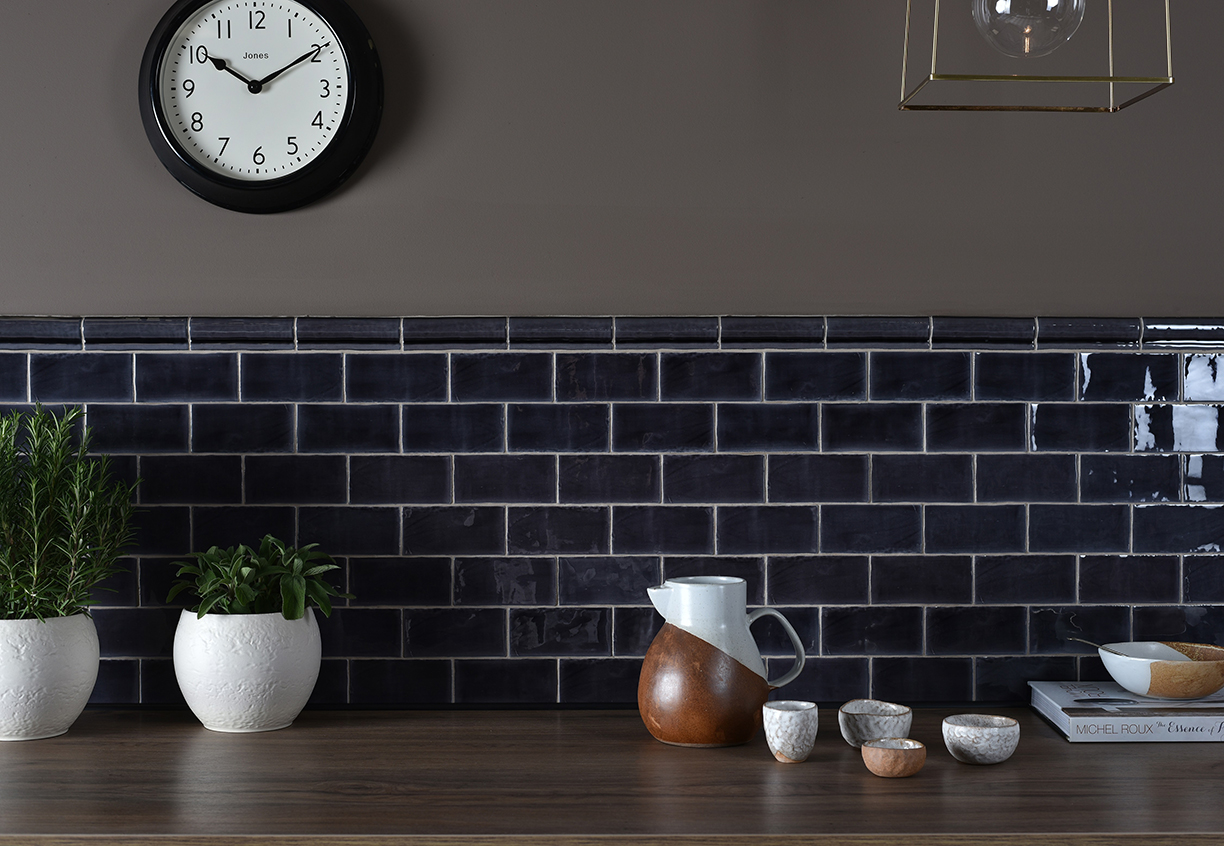
Photo courtesy of Original Style
3. Allowing Tones to Stand Out
When it comes to dark-colored walls, an immediate response may be to counteract the heavier tones with lighter statement pieces. While this can create a beautiful design, it’s important to allow the rich, dark colors to stand out. In this kitchen, there are minimal pieces that are lighter in color, allowing the walls to be full in color and provide a warm and cozy atmosphere.
With a sleek, modern style becoming the new trend in home design, chandelier makers are turning from the traditional designs to modern light fixtures instead. Not only do they add an elegant and modern piece to the room, but they’re becoming pieces of art in their own right.
The creativity that goes into designing and manufacturing these modern chandeliers is pushing the boundaries on the line that constitutes furniture and works of art. With that said, here are some tips on choosing which modern chandelier is best for you:
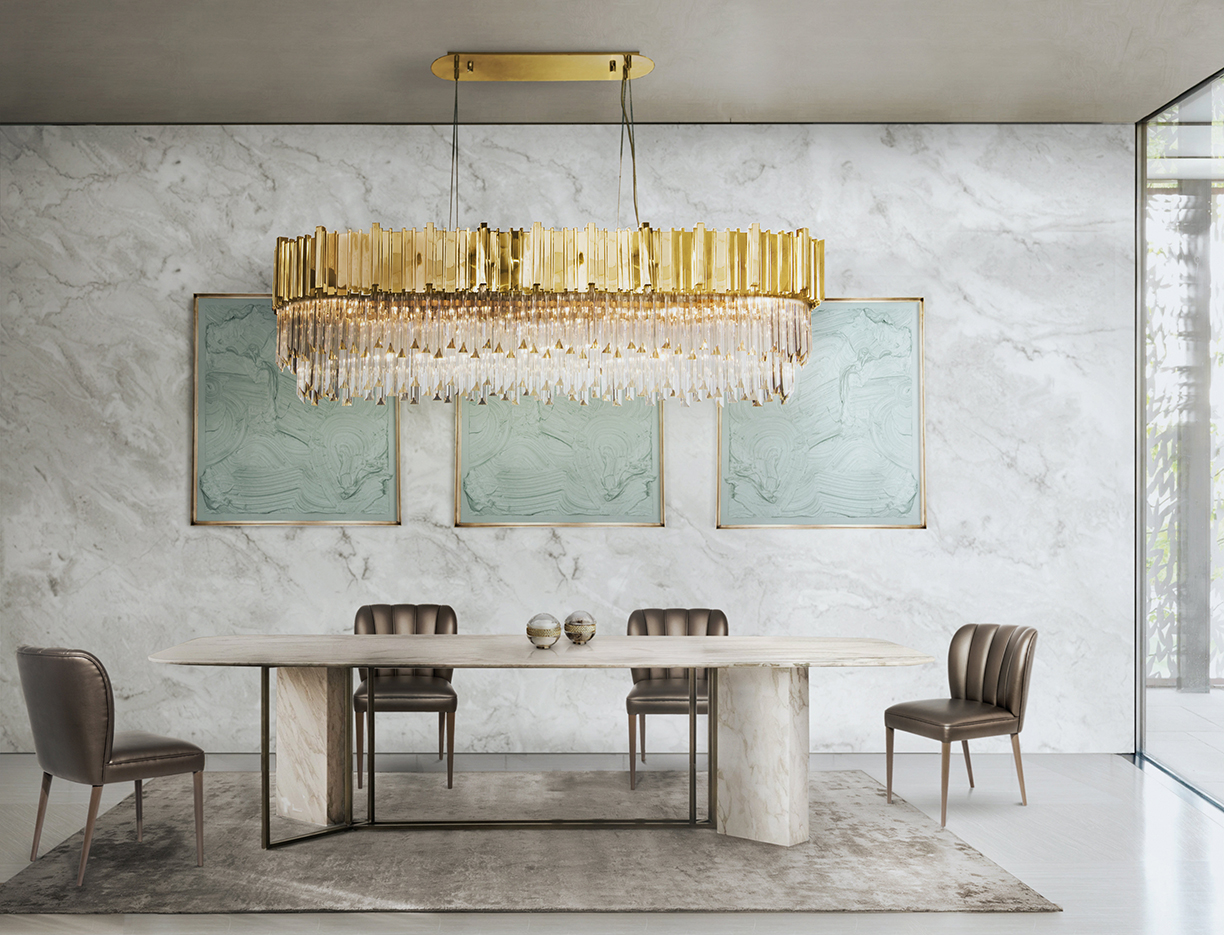
Photo courtesy of Covet NYC
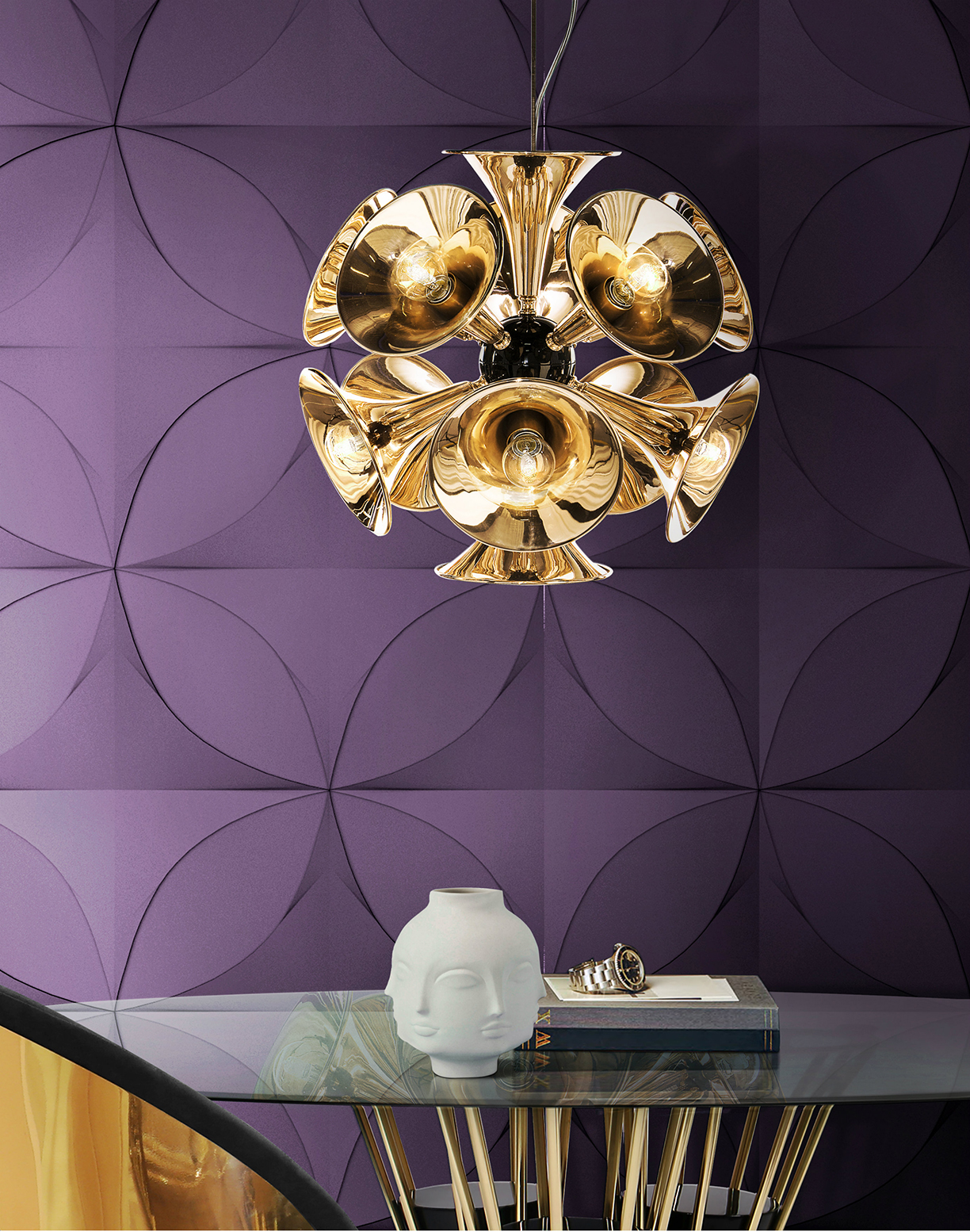
Photo courtesy of DelightFULL
1. Get Creative with Material
With any modern chandelier, the material matters. Getting creative with the material used to create the chandelier can add a great addition to the room’s decor. Creativity is proven to go a long way in designing the perfect modern chandelier.
The Botti pendant lamp, inspired by the American trumpet player Chris Botti, adds a fun twist by using trumpets as the main material of the chandelier. While still luxurious in its style and design, it adds personality and a conversation piece to the space. While the chandelier is more retro in its style, using a creative material and thinking outside of the box can be beneficial for whichever style is preferred.
2. The Space it Resides
Both small and large chandeliers can be a great addition to any space. It’s important, however, to consider the type of space when choosing which modern chandelier to include in it. For a foyer or room with high ceilings, look for a larger chandelier to create a major focal point. In spaces like dining and living rooms, a smaller chandelier will still be a work of art, yet it won’t take away from the rest of the design in the space.
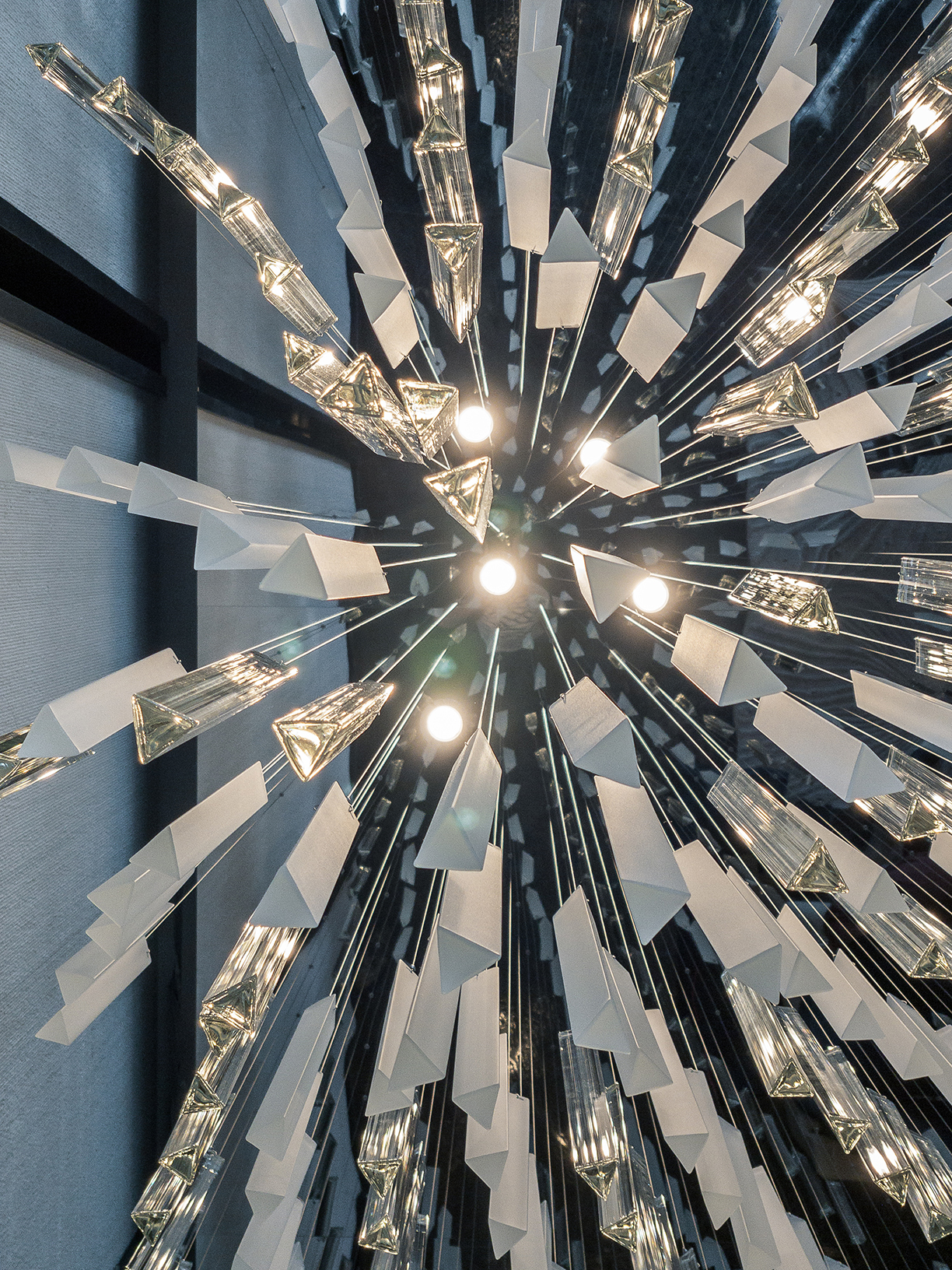
Photos courtesy of Muse Residences
In recent years, more and more hotels and apartment buildings are getting rid of the traditional designs and replacing them with modern and sophisticated styles instead. The modern chandelier in this residential building is certainly the focal point, simply for its sheer size and elegance. When visitors and residents walk into the building, they are in awe of its design.
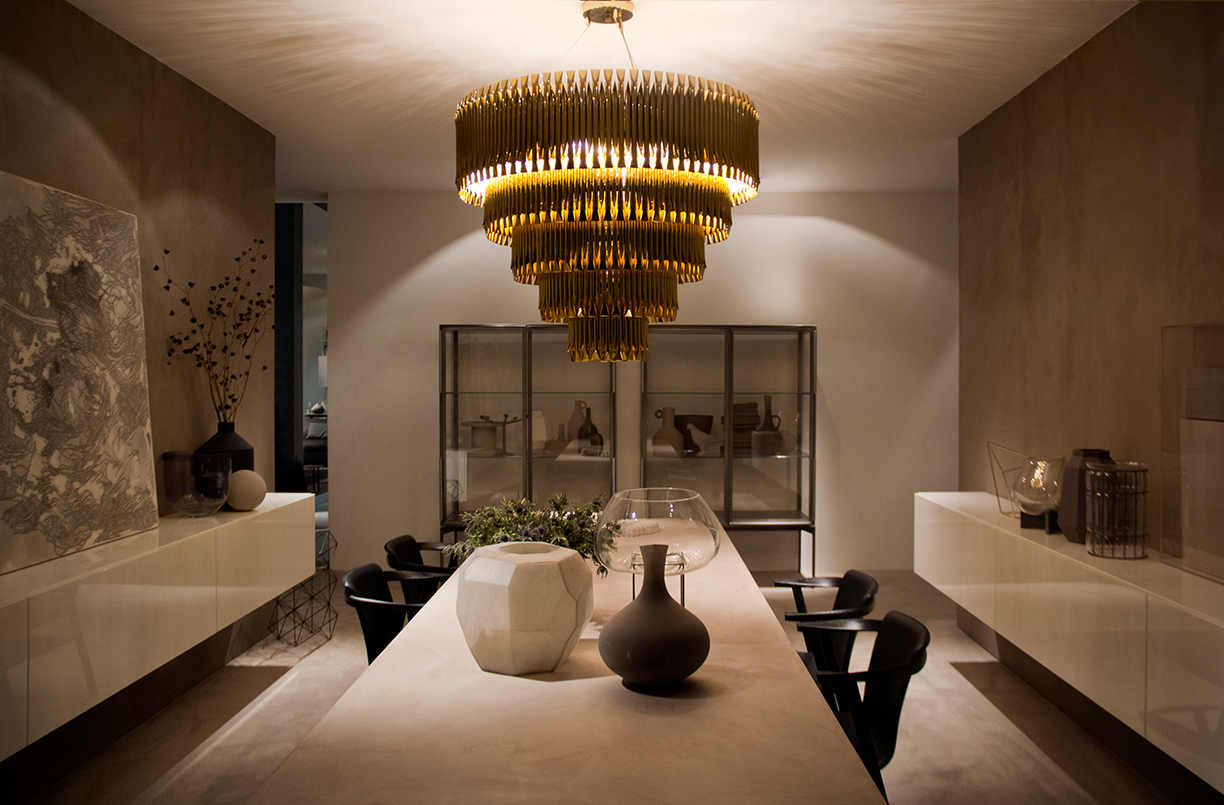
Photos courtesy of DelightFULL
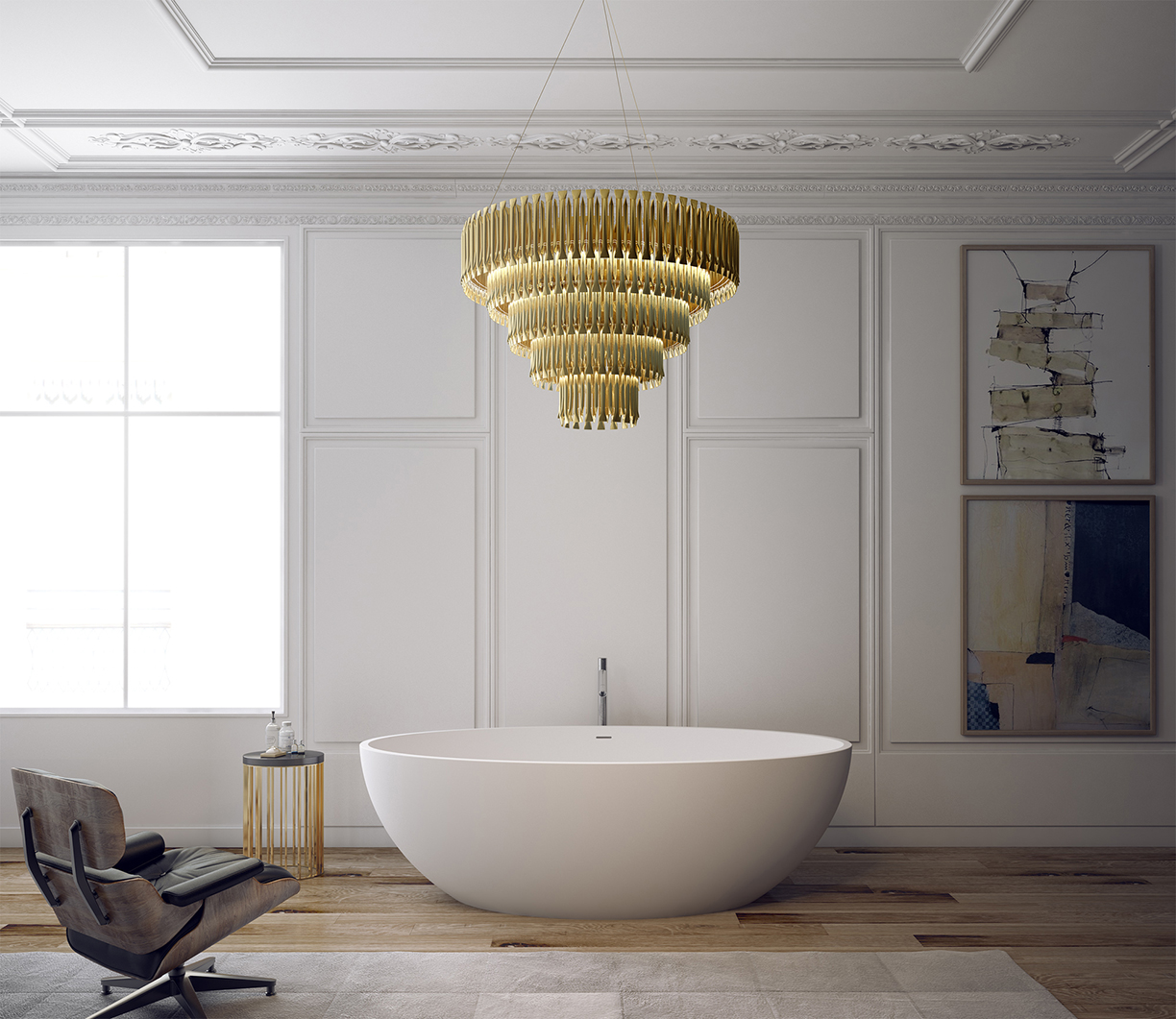
3. The Lighting
In terms of lighting, either a dramatic flair or a softer hue can be a great addition to any space. While the design and material of chandeliers can be similar, the lighting can make a major difference in the atmosphere in the space.
While the first chandelier provides a dramatic light in a darker room, the second provides a more subtle light in a room ample natural light. Both, however, add to the design and atmosphere of the space.
4. A Work of Art
Regardless of the material, design and lighting, it’s crucial to remember the creativity a modern chandelier allows. Whether it’s above a dining table, in the living room as a statement piece or the focal point of the foyer, modern chandeliers aren’t simply light fixtures anymore — they’re works of art.
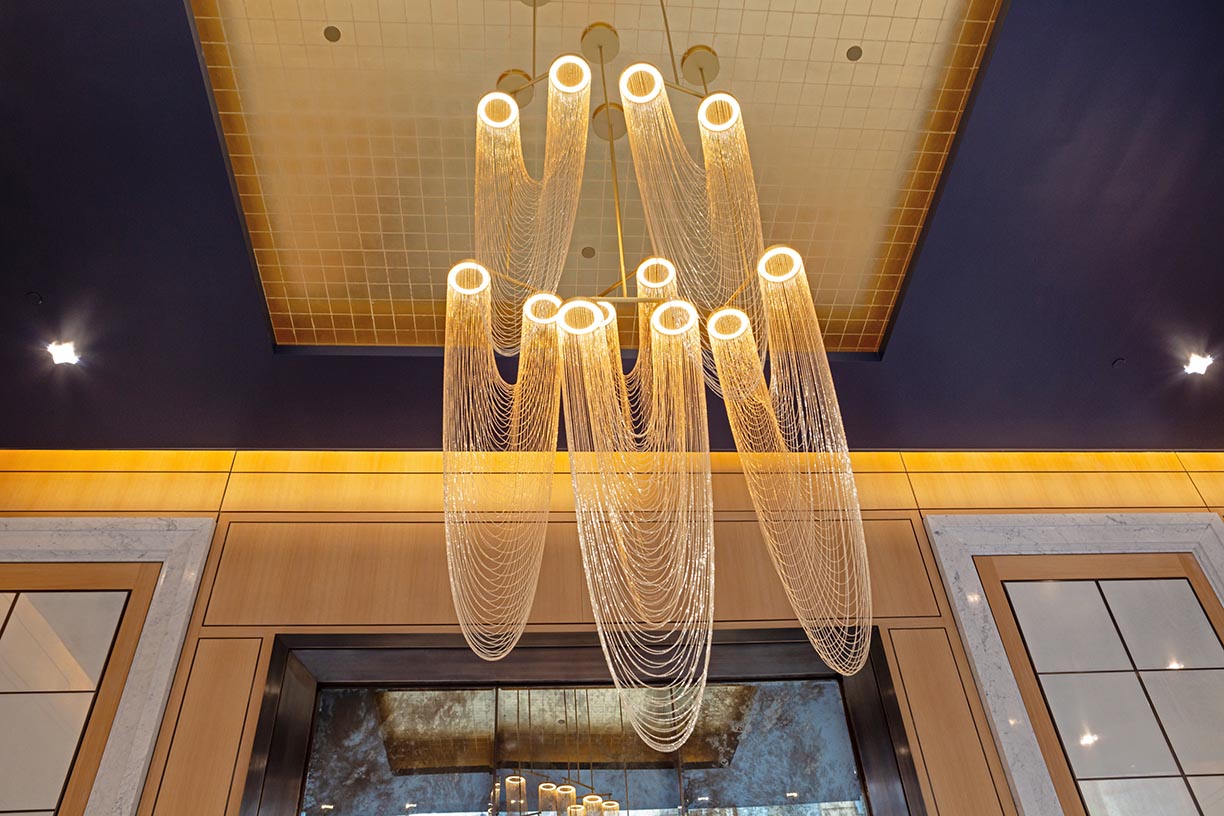
Photo courtesy of The Alyn
Boho may bring overwhelming patterns and a mix and match style of colors to mind but these refined expressions of boho are bringing a whole new touch of elegance and class to the term.
Choose the bohemian blend that is perfect for you and your home.
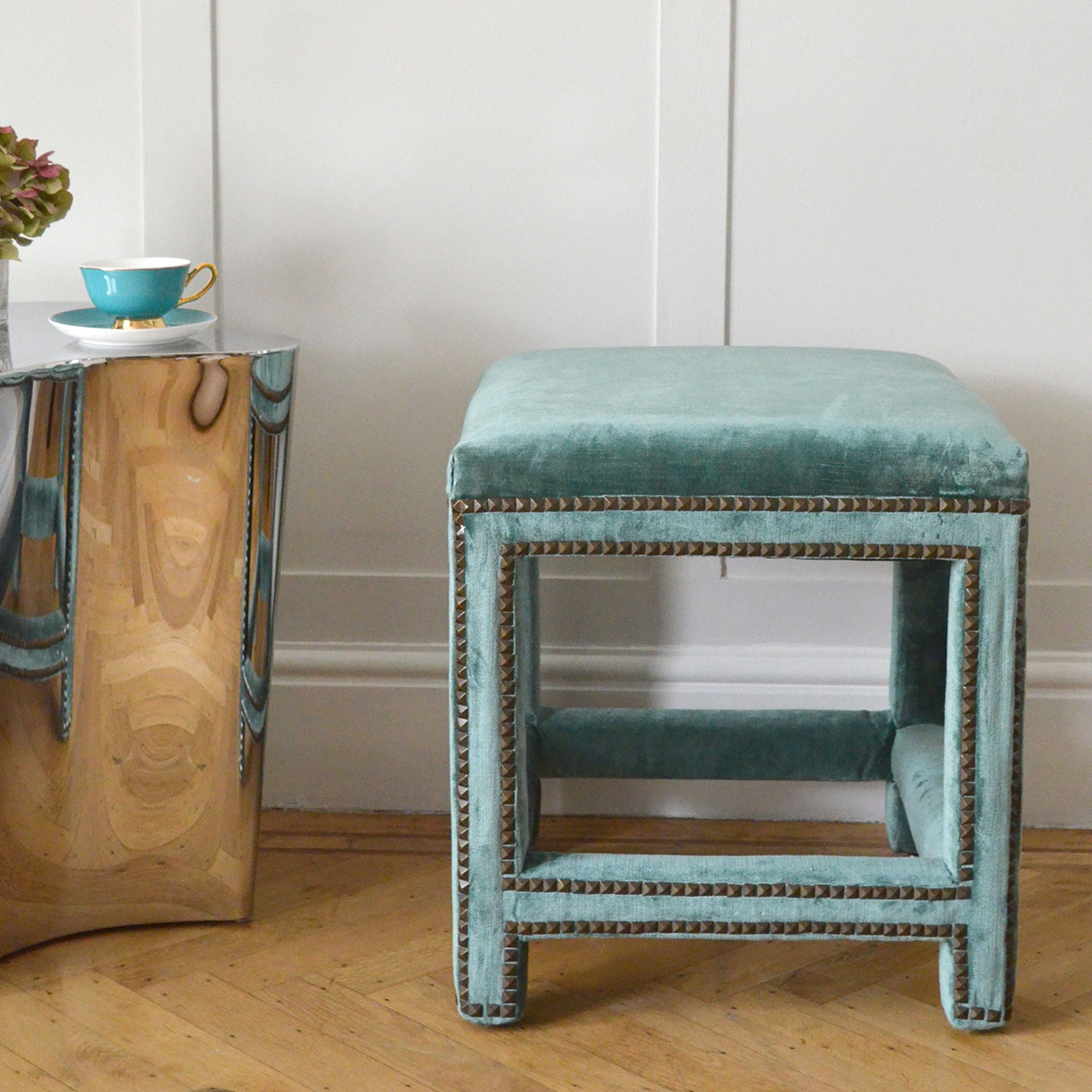
Photo courtesy of Sweetpea & Willow
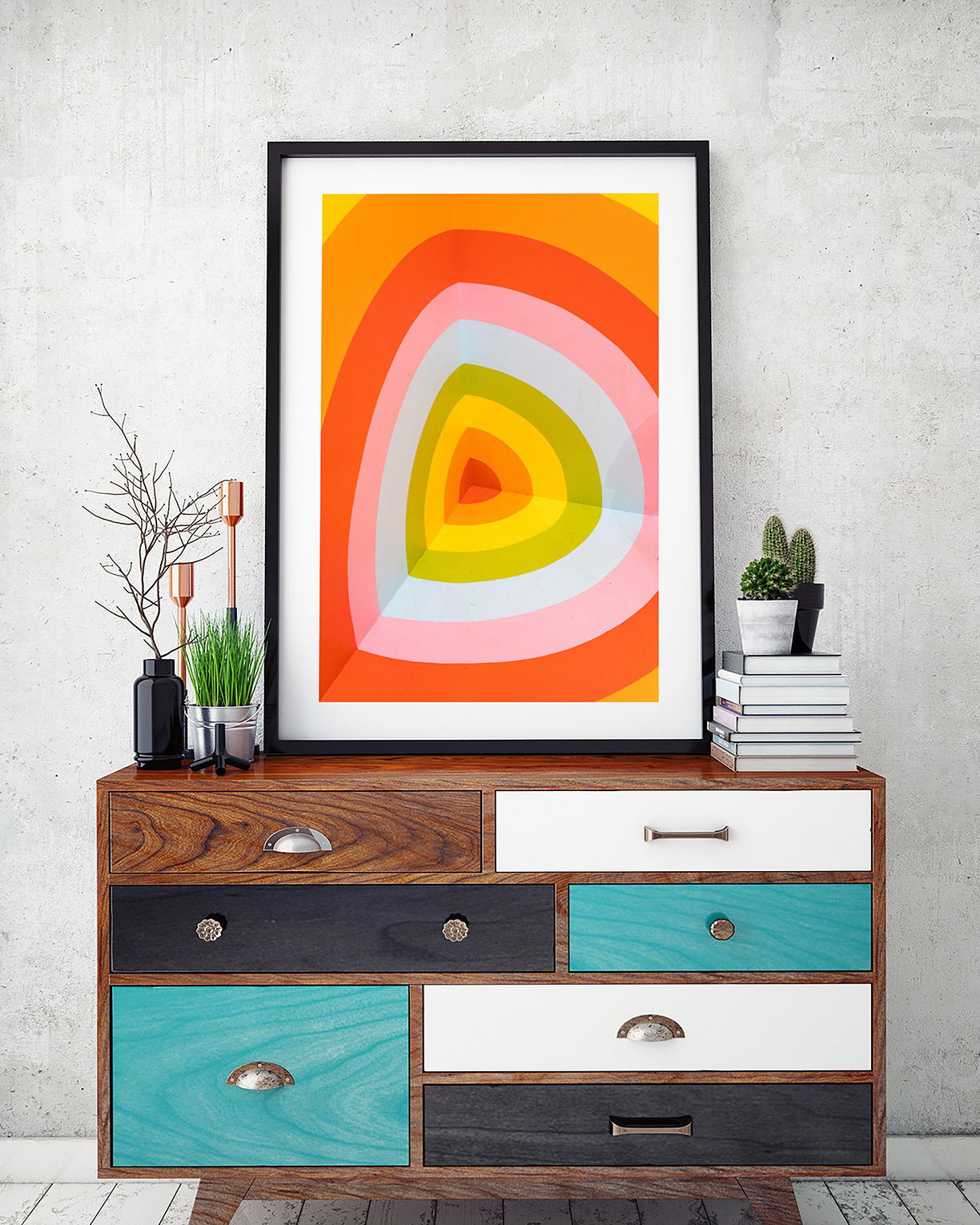
Photo courtesy of ABSTRACT HOUSE
African Boho
When many people think of boho style, they think of African inspired bohemia, namely the bright colors, clashing prints and metal tones that are often introduced into the décor of a boho themed living space. Include lanterns, jewel-colored cushions, and ottoman style seating to achieve this laid back vibe.
European Boho
European boho is a little more refined in its mix and match approach, though strives to look spontaneous. European style boho is characterized by vintage style furniture paired with rustic beaded curtains and quirky wall art. Layers, mixed fabrics, and statement wall décor will make or break this look.
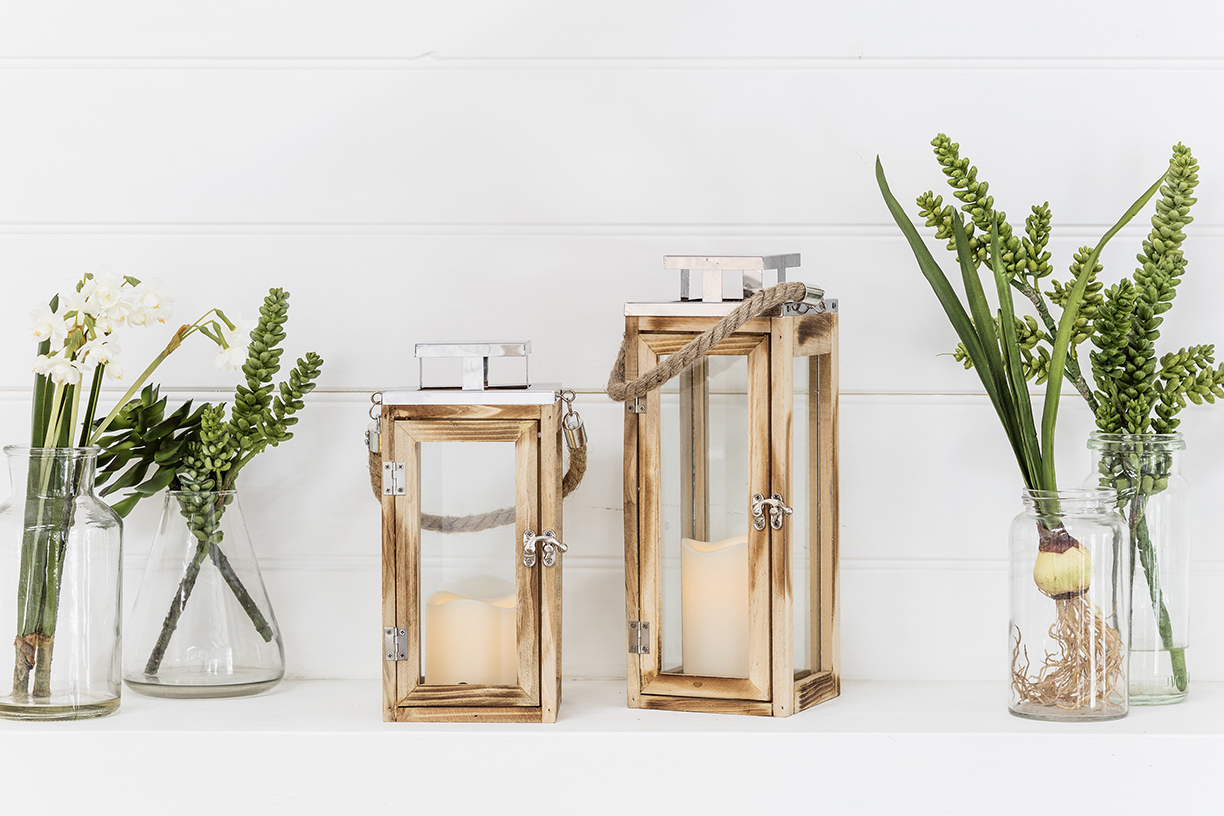
Photo courtesy of Lights4fun
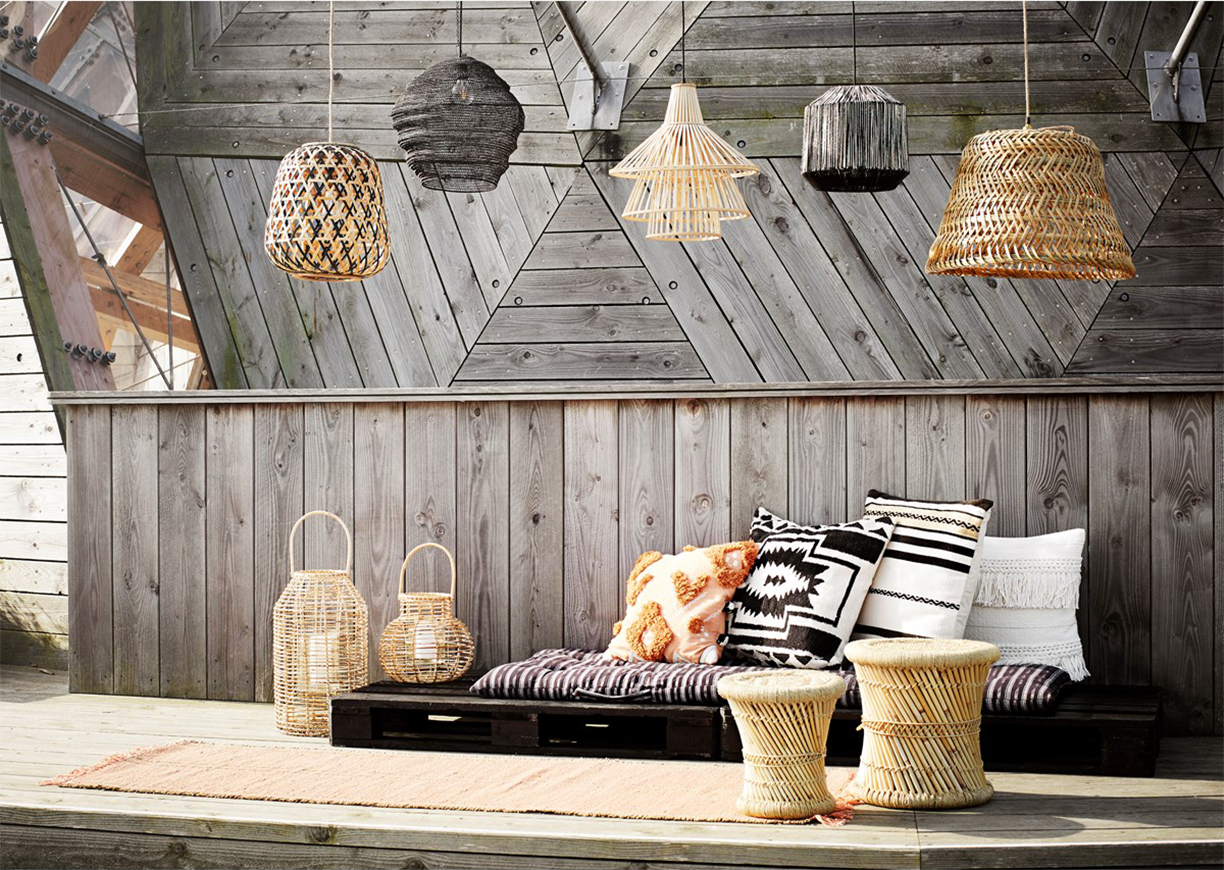
Photo courtesy of Flo & Joe
Western Boho
The 1960s and 70s saw a resurgence in bohemian style, one that was influenced by community living that became a prominent characteristic of the counter culture. The western bohemian style relies heavily on natural materials and fabrics to complete the aesthetic. Think exposed beams, tribal prints and pouffe’s or floor cushions rather than traditional seating.
Contemporary Boho
So what’s happening now with Boho style? Contemporary Boho style borrows from its processors but combines elements of the classic boho styles with modern minimalist living. Think white walls and floors, wicker seating and animal head wall art. Cushions and rugs add splashes of color while décor pieces can range from vintage to African to contemporary.
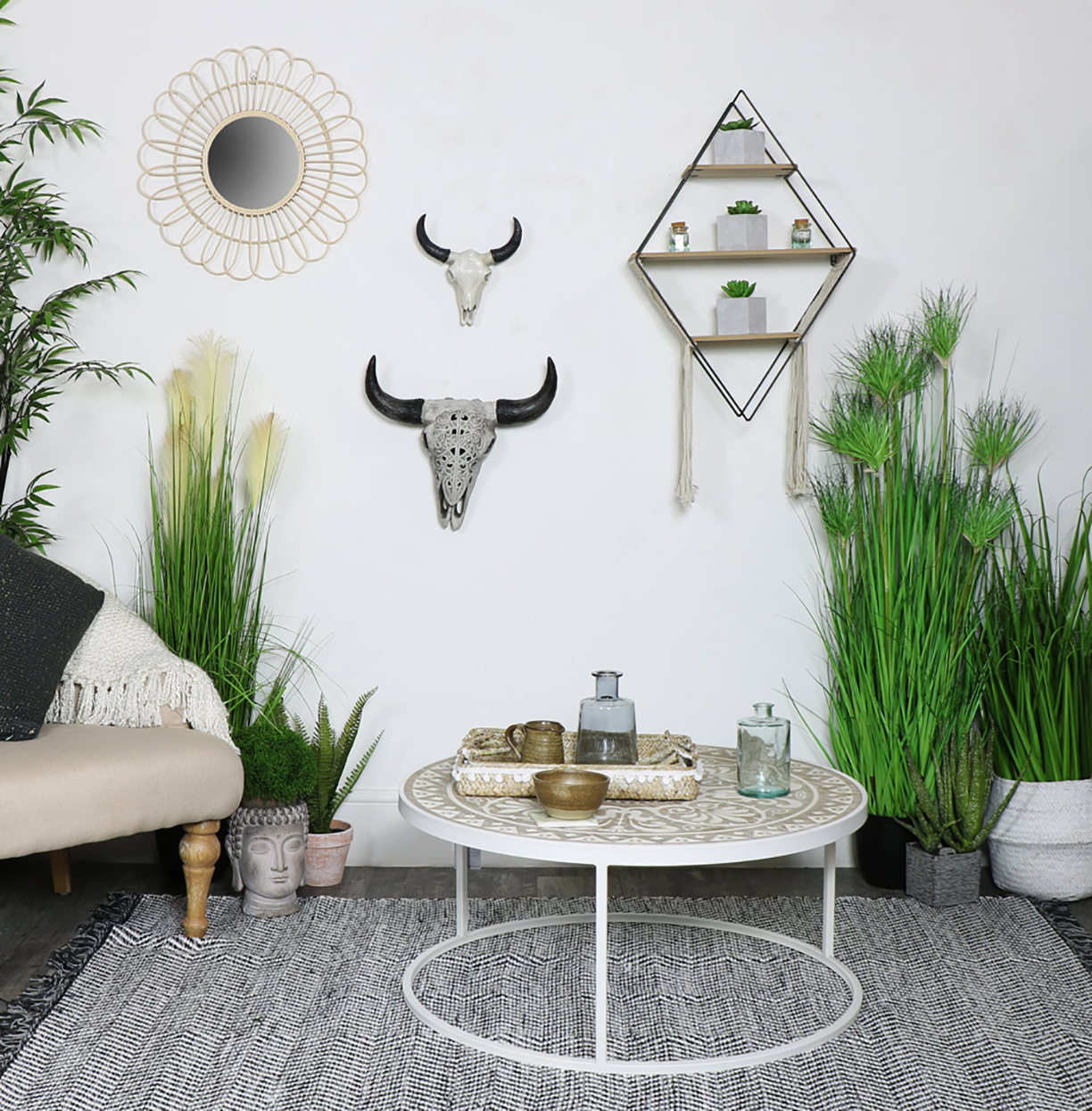
Photo courtesy of Melody Maison
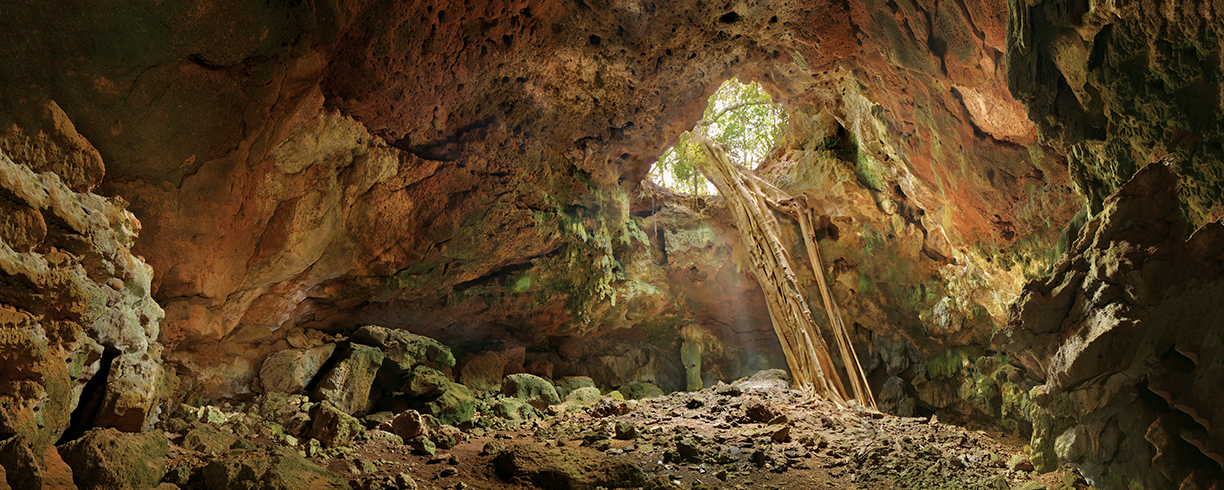
Bruce T. Martin uses photographs as words to create a vivid story about the culture and history of Mayan caves and cenotes of the Yucatan and more.
Photography by Bruce T. Martin
“In 1975, my father gave me a Pentad Spotomatic 35 mm camera, that I still have today,” says Bruce T. Martin, an American Fine Arts photographer. Even early on Martin didn’t pursue other careers or jobs outside of photography. Initially, his interest in cameras and capturing moments sparked when he was studying abroad in Europe 1976 and he’s been studying the art form ever since. Now, Martin explains that he takes a literary approach to his photography. “Images combine like words do in a sentence to tell a story,” he says. “My motivation is to use photography to document our world, explore our perceptions and question our viewpoints. ”
Martin grew up in Chautauqua County in western New York where he studied at Newhouse School of Communications at Syracuse University. His connection to photography continued to grow even building a darkroom in his parent’s basement and later began apprenticing for Irving Penn in New York City. “That experience opened my thinking to a whole new world of possibilities,” says Martin. Although the young photographer already had an affinity to landscape photography, his job at the Chautauqua County Office of Planning and Development led to a deep appreciation for architectural structures. One responsibility of Martin’s new job was to “contact the owners of interesting and important architectural structures in the community to secure permission to photograph their homes and buildings.”
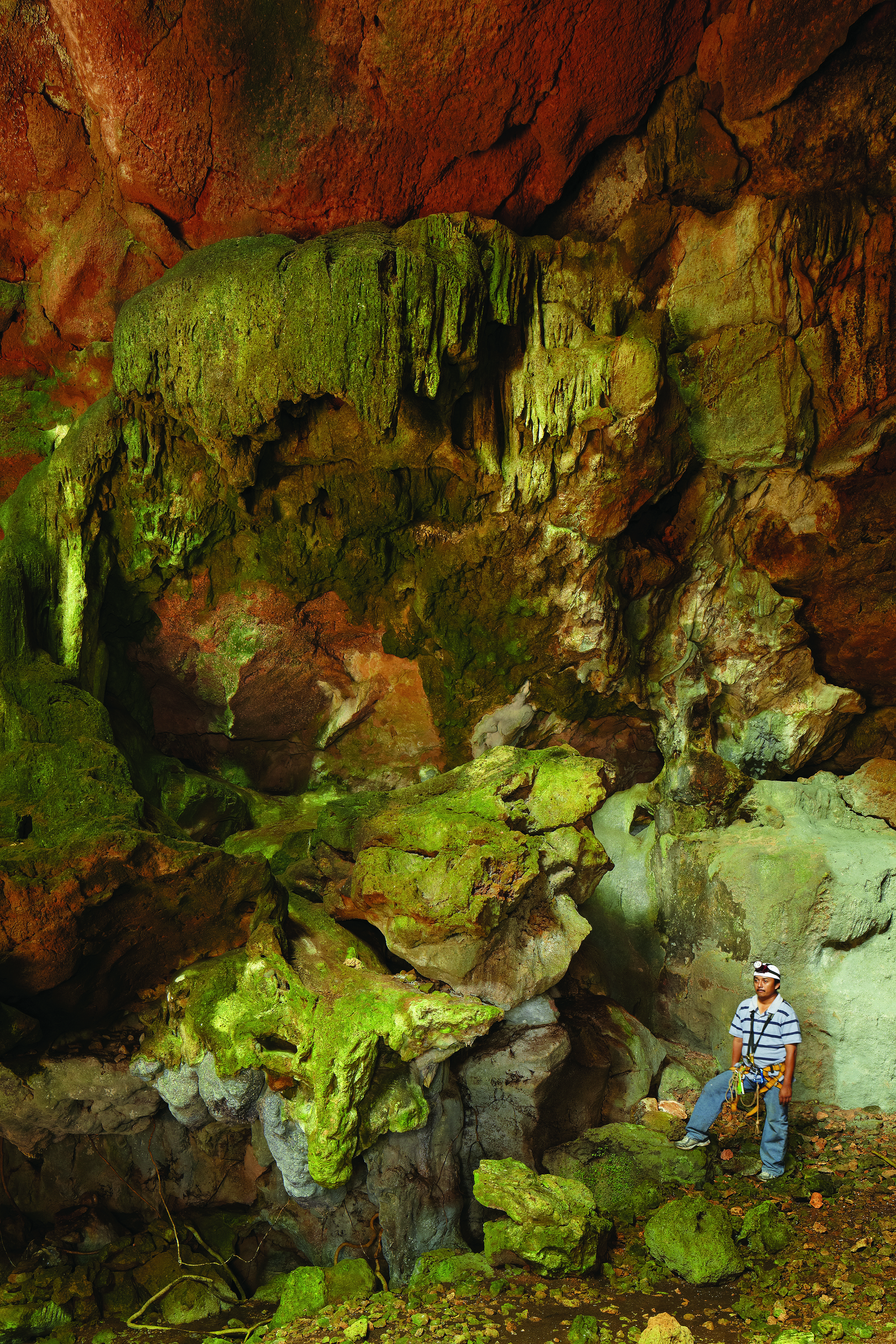
Gruata Milenio, Yucatán 2012
In terms of style, the photographer has “tried to combine the excellence of many photographers such as the technical mastery of Ansel Adams, the unique viewpoints of Andres Kertesz and the eloquence of Irving Penn, to name a few,” says Martin. However, from a technical point of view, Martin describes his approach as direct. “Positioning my camera in a place where I believe will reveal what I feel is most important to the image … then waiting for or creating the lighting that best reveals the detail and color to express the emotion and purpose of the image.”
As an artist, Martin is always working on a number of projects such as a larger portfolio of Boston cityscape and architecture. A series called “Fragment Landscape” is also in the works and involves overlapping images gathered in the White Mountains of New Hampshire. However, there has been one persisting project that Martin has been expanding on since 1987.
“I have been working on a project on the Maya of Central America, using historical documents, academic research, and current events in conjunction with my photography and recordings from the field,” according to Martin. The first phase of the project resulted in the book and exhibit, “Look Close See Far, A Cultural Portrait of Maya”, and has now progressed into the next component. “Seeking Sacred Landscapes, Maya Caves and Cenotes of the Yucatan”. Martin describes the project as, “beautiful, mysterious, and compelling.”
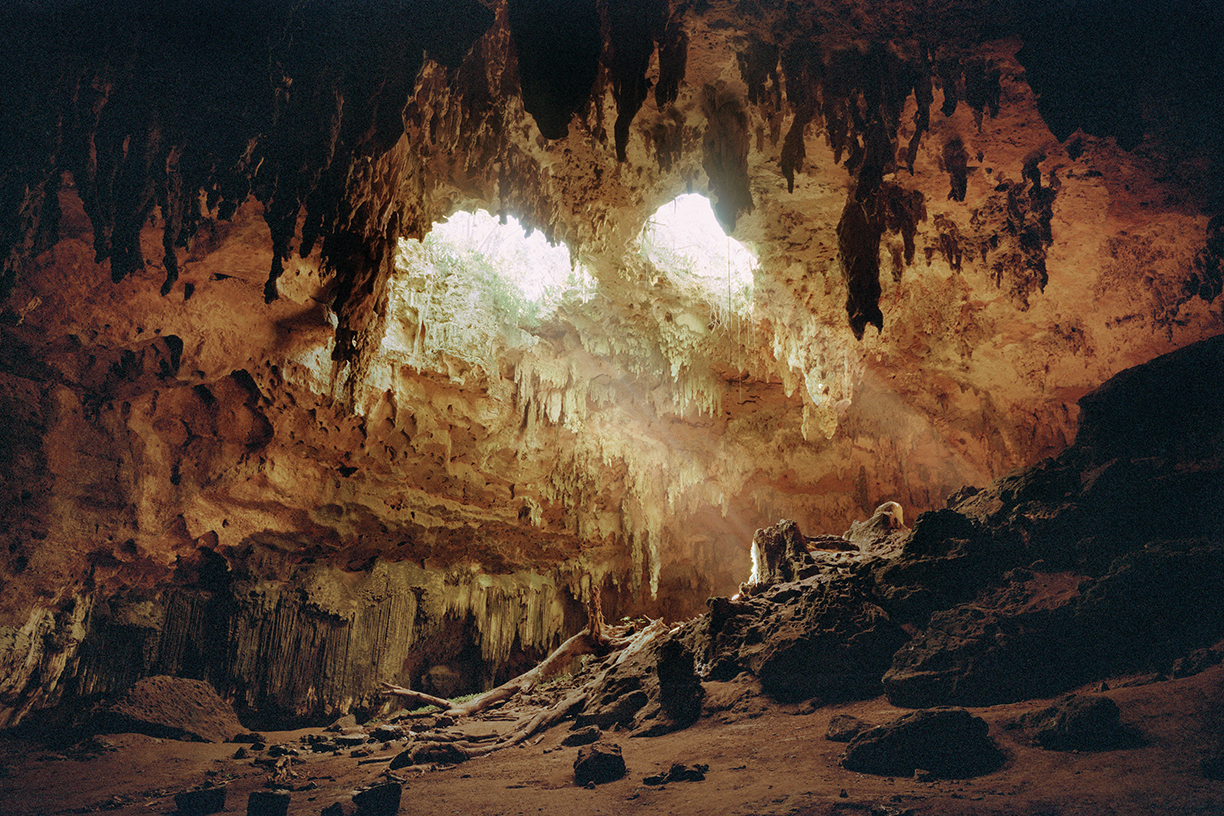
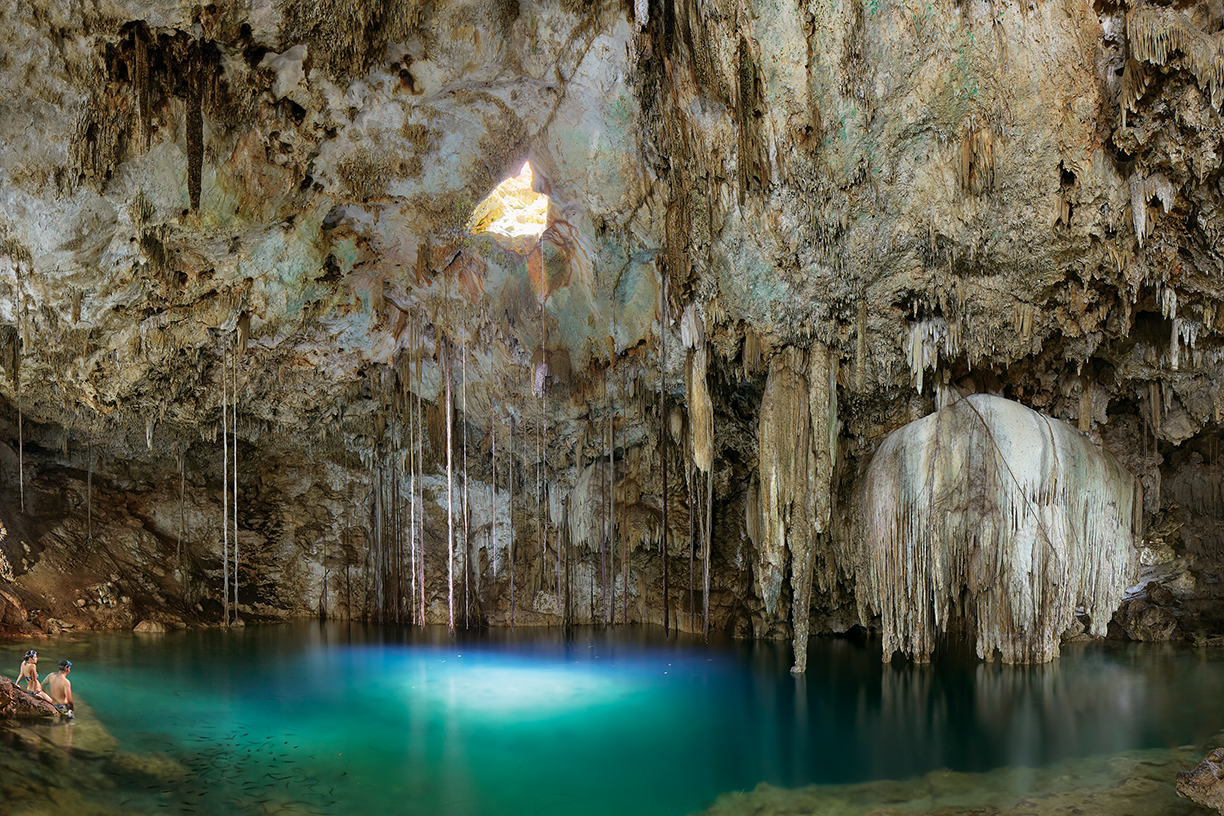
The series “Seeking Sacred Landscapes” is a combination of images of the Yucatan’s caves and cenotes with archeological, historical, and environmental essays by established authorities, according to the experienced photographer. Martin’s images compel you to look closer at the detail that has formed over the years within nature.
It’s hard to imagine what being in those types of caves would be like, but Martin describes it as a time full of anticipation. “Knowing that I will experience and learn something new each time fills my mind as I begin the descent into these underground chambers.” This experience has been building over the years. When the project first began Martin became interested in many of the Mayan’s core mythology concepts, which later led to his deeper understanding of the culture. “Harmony in life is a daily struggle. With the rapid development of recent years, many contrasting and violent viewpoints have been introduced, so that the Maya and their environment are being overwhelmed,” says Martin. “Surviving these disruptive influences and maintaining their cultural dignity is the challenge for an uncertain future that the Maya now face.”
The series “Seeking Sacred Landscapes” is a combination of images of the Yucatan’s caves and cenotes with archeological, historical, and environmental essays by established authorities, according to the experienced photographer. Martin’s images compel you to look closer at the detail that has formed over the years within nature.
It’s hard to imagine what being in those types of caves would be like, but Martin describes it as a time full of anticipation. “Knowing that I will experience and learn something new each time fills my mind as I begin the descent into these underground chambers.” This experience has been building over the years. When the project first began Martin became interested in many of the Mayan’s core mythology concepts, which later led to his deeper understanding of the culture. “Harmony in life is a daily struggle. With the rapid development of recent years, many contrasting and violent viewpoints have been introduced, so that the Maya and their environment are being overwhelmed,” says Martin. “Surviving these disruptive influences and maintaining their cultural dignity is the challenge for an uncertain future that the Maya now face.”
Through images that help to shape and tell a story, Martin is hoping that the series “Seeking Sacred Landscapes” will attract some attention to these struggles. “With a greater awareness of their issues, a more productive dialogue on the Maya and their land can begin, which will promote cultural diversity, protect their environment and respect for their fading traditions.”
Each part of Martin’s experience pushes him further and enhances his ability as an artist. A journey from architectural to landscape photography has proved there is more than what originally meets the eye, which can be seen in the details of his photos. According to Martin, “Each of these naturally-occurring, organic caverns and cenotes are unique yet similar architectural spaces that overwhelm your perceptions and preconceived notions of the world we live in.”
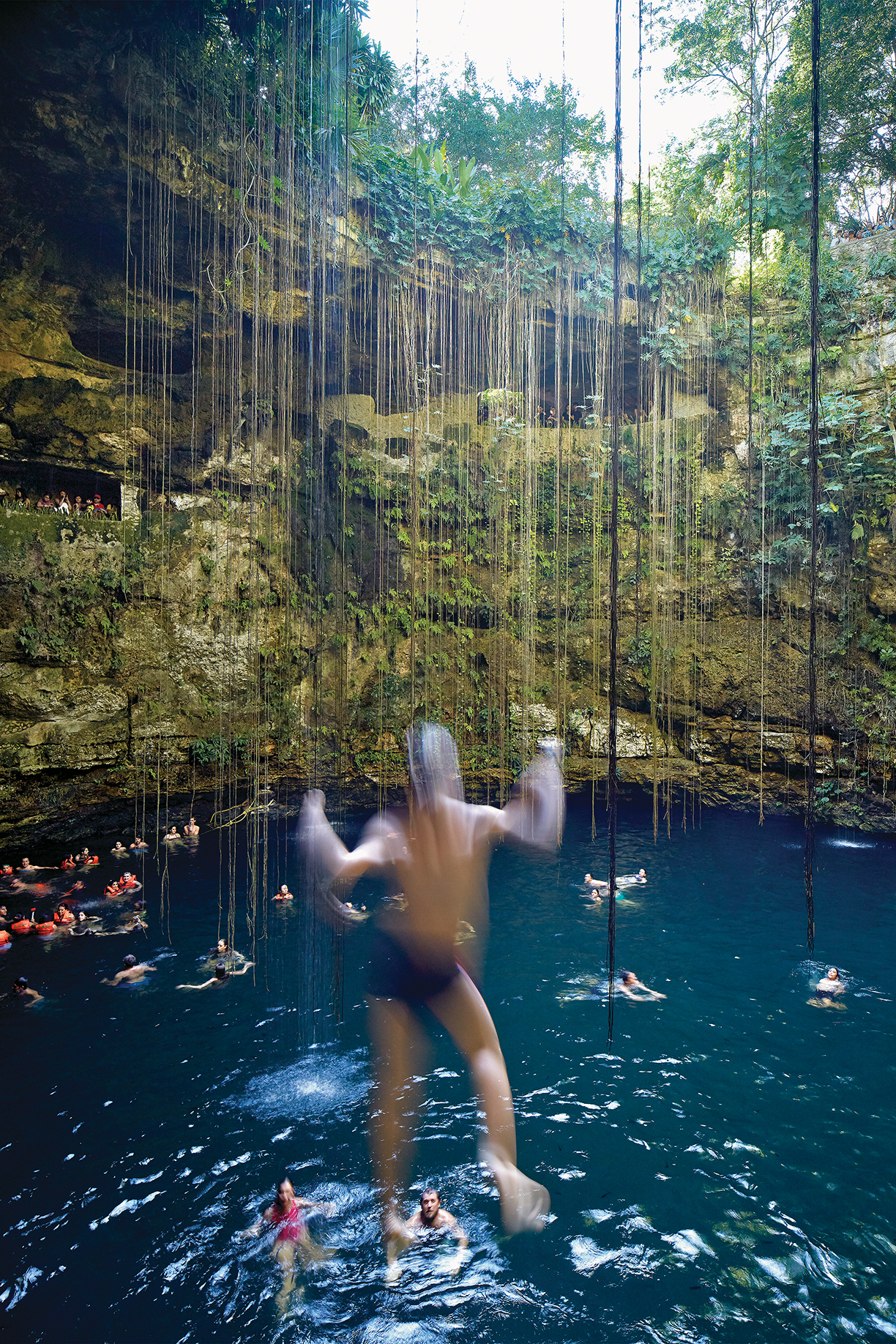
Cenote Ik kil, Yucatán, 2016.
For similiar content, try these articles, Embrace the Charm of Mexico City, Aman Resorts International to Debut First Destination in Mexico in 2020, Adventure Photographer seeking Ultimate Storytellers, Travel Designers.
This editorial originally appeared in The High End Spring 2019.
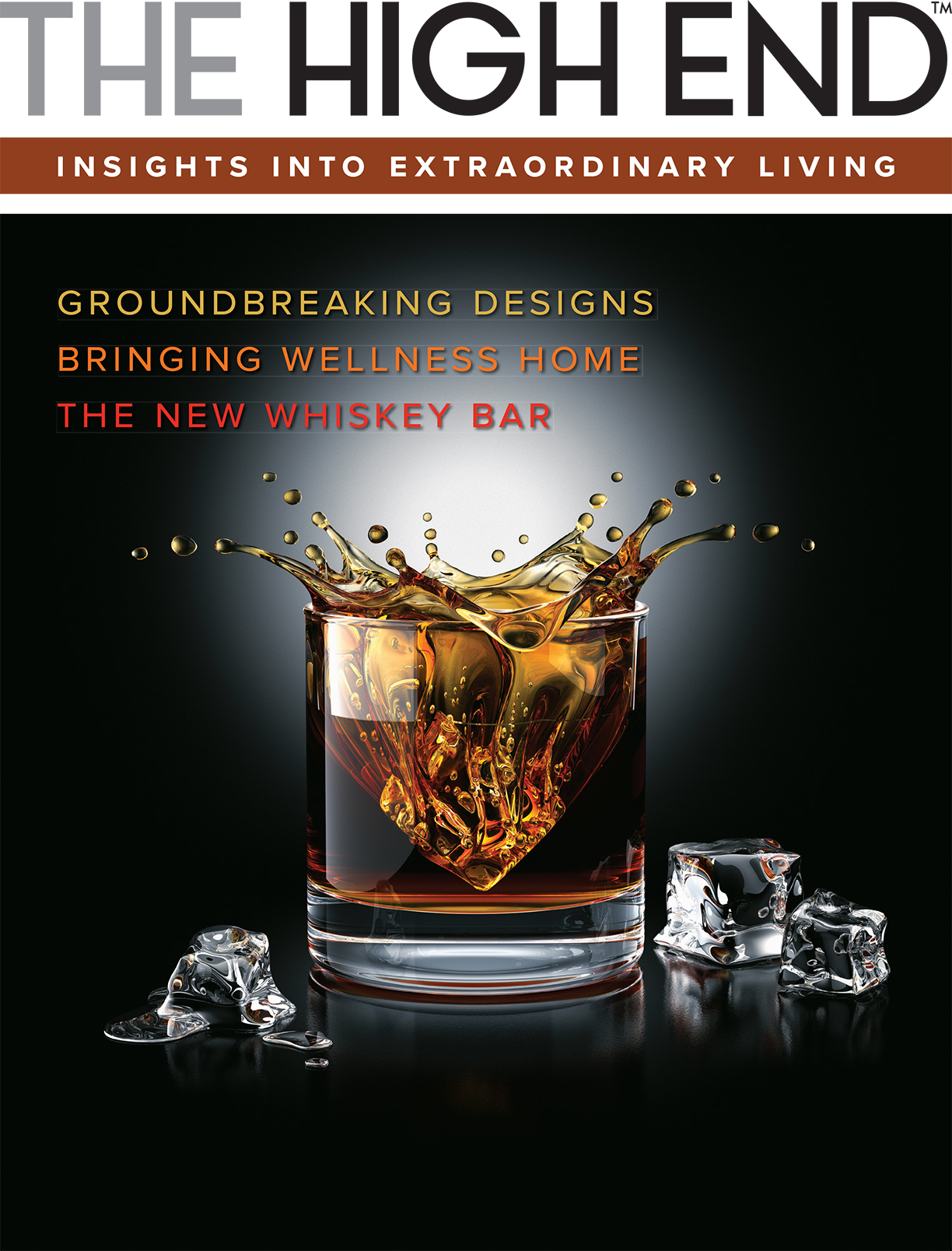
Libraries have always been a timeless space open for unique design. Whether the library is modern or historical, small or large, or used for reading or working, the library is possibly one of the rooms that invites the most creativity in its architecture and design.
Mansion Global interviewed Jeffrey Forrest, the founder of STACKLAB, a design studio based in Toronto, Canada, to ask about his advice in designing libraries.
“Your library is a record of who you are,” Forrest told Mansion Global. “Design decisions should be deliberate and very personal — with equal focus on celebrating your history, but also on the joy of reading.”
With that being said, here are a few tips on designing the perfect private library.
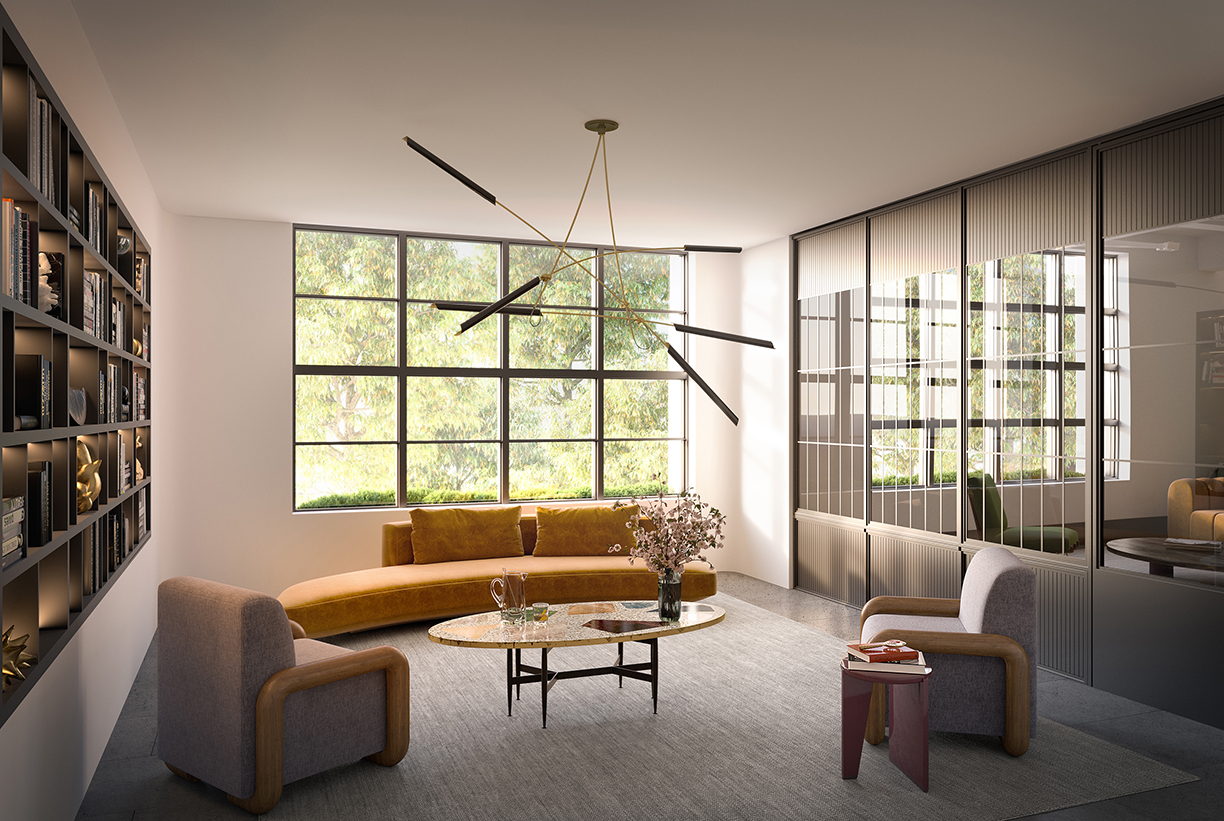
Photo courtesy of Binyan by IF STUDIO
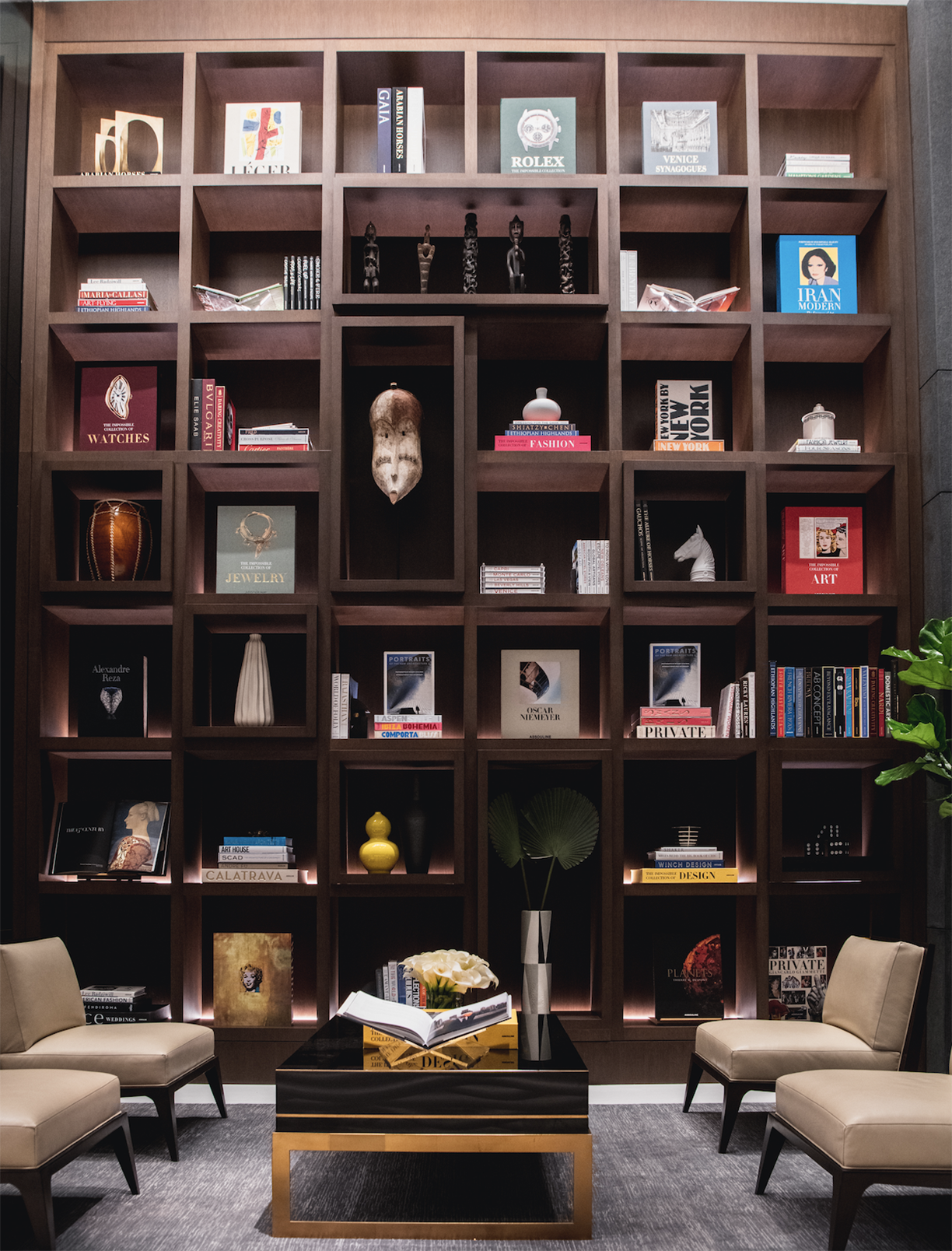
Photo courtesy of Selwyn Tungol
Using your space
For book-lovers who need an ample amount of shelving space, floor-to-ceiling bookshelves are functional and add a great design to the walls of the room. When all the books are placed on the shelves, it creates a beautiful assortment and makes the walls burst with color from top to bottom. Whether it’s designed with a more modern or classical touch, the floor-to-ceiling bookshelves are sure to be the centerpiece of the room.
The double-height library located in the lobby of 277 Fifth Avenue in New York City utilizes this concept, creating a beautiful centerpiece for all visitors and residents to see and use.
Bold Colors and Fabrics
Feel free to bring vibrant colors out from the shelves and into the room through the furniture, curtains, walls or rugs. Whether you’re going for a more modern or historical design, bold colors can create a more interesting and unique space. In Washington, D.C., the Jefferson hosts a book room sure to attract book-lovers from all over. Its velvet green couch adds the perfect pop of color, creating the perfect balance in the space between neutral and vibrant colors.
The bold colors can be used not only in historical designs, but in modern designs as well. Adding a statement rug or sofa can bring a room’s colors together.

Photo courtesy of The Jefferson
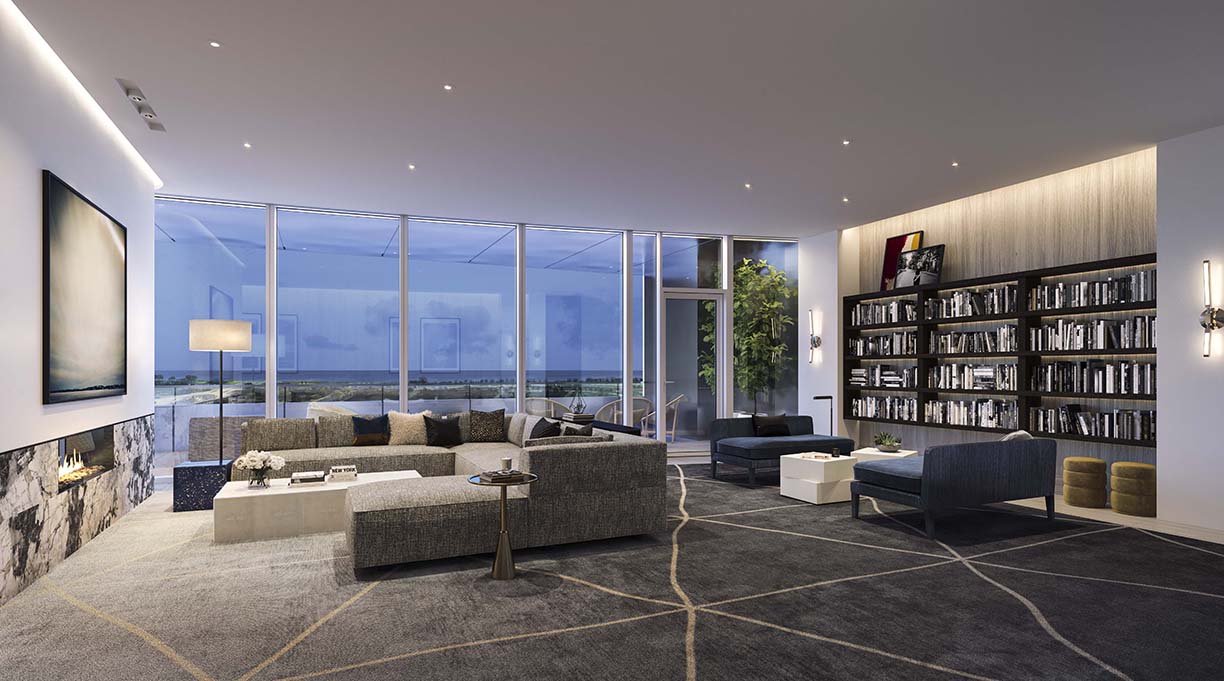
1000M, Photo courtesy of Miller Hare
Laying it Out
A library is the perfect opportunity for designers to get creative with the layout of the space they have. Whether the center of the room is a desk, four chairs around a coffee table or an assortment of seating, there are endless possibilities for the designer to create the perfect space to fit the needs of the homeowner. At 1000M, the layout is comfortable yet elegant, with ample seating for readers to use.
If the option for multiple levels is available, create a unique look by adding a spiral staircase to get from one level to the other or ladders on the shelves for the reader to grab whatever book they’d like. Make sure, however, that whatever the layout is, there is plenty of comfort for the reader to use the space often. Adding comfortable seating and plush rugs can do just the trick for this.
Whether designing the space or simply looking for inspiration, libraries are arguably one of the best rooms to have the most creativity in its design. So remember — regardless of what look or layout, make sure to use this unique opportunity!
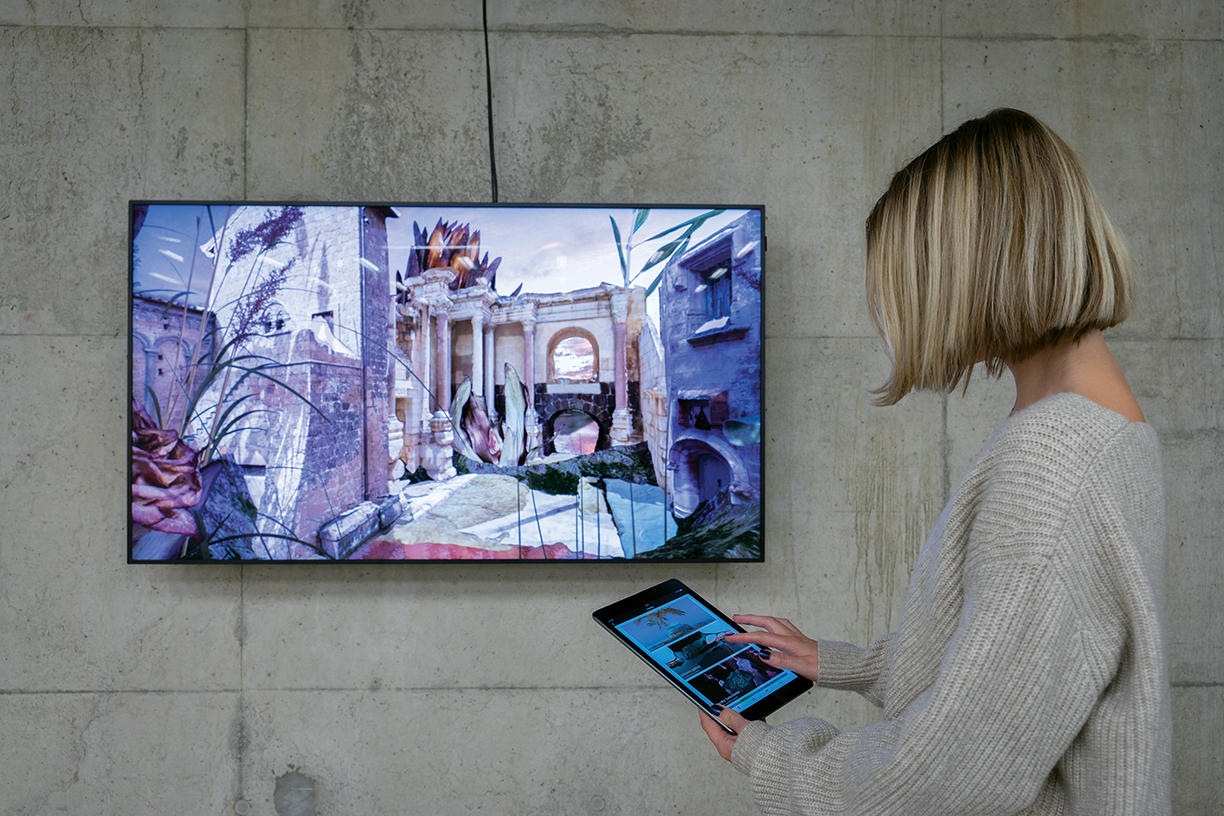
Photo courtesy Niio.
Smart technologies and artificial intelligence are changing the way we consume art.
While many treasured works of art are safely contained in notable museums or in the homes of experienced collectors, a new tide is cresting along the shores of the art curation field with the influx of digital art.
Digital art, more widely known as new media art, is an interesting sector of the art industry to define, even for Beryl Graham, who is a professor in New Media Art at the University of Sunderland. She notes that the roots of this art form have drawn inspiration from a range of movements, from conceptual artwork to video art, which also began in the 1960s.
“It’s broadly digital but [it’s also] the kind of art that works in different ways in different kinds of behaviors,” Graham notes. One fascinating example would be an exhibition of software art in which the software, sometimes even artificial intelligence-based artwork, can learn and grow on its own. Graham explains that an artist might start a piece of software and watch it evolve, perhaps give it a virus and watch, showing to the audience that the “end point isn’t quite under the control of the artist.”
Magdalena “Magda” Sawon, owner of the contemporary art gallery Postmasters Gallery in New York, says that the digital age has only heightened the senses of curators and artists, who are traditionally at the forefront of new developments in culture and technology.
“Technology is a tool,” she notes, “it is also a moving target and changing constantly. The question is to be aware of new developments and adapt it intelligently to one’s needs and benefit.” Fittingly, as artists have been harnessing the power of technology within the art industry, curators and galleries have had to “keep up with the times,” and embrace digital forms of artwork and the systems and methods in which they are displayed.
Donna Holford-Lovell, director of The North East of North festival (NEoN), notes how the incorporation of interaction and participation into art displays appeals to today’s technology-savvy audiences that have been gradually reinvigorating focus on the digital art world.
“The idea of ‘curation’ has become ubiquitous and our audience is seen to be curating many aspects of their own lives,” Holford-Lovell says. NEoN is an organized event that aims to advance the understanding and accessibility of digital and technology-driven art forms by having the artist and curator work together to translate “the spectacle of experience,” via digital platforms within physical spaces, like virtual reality, artificial intelligence, and even social media.
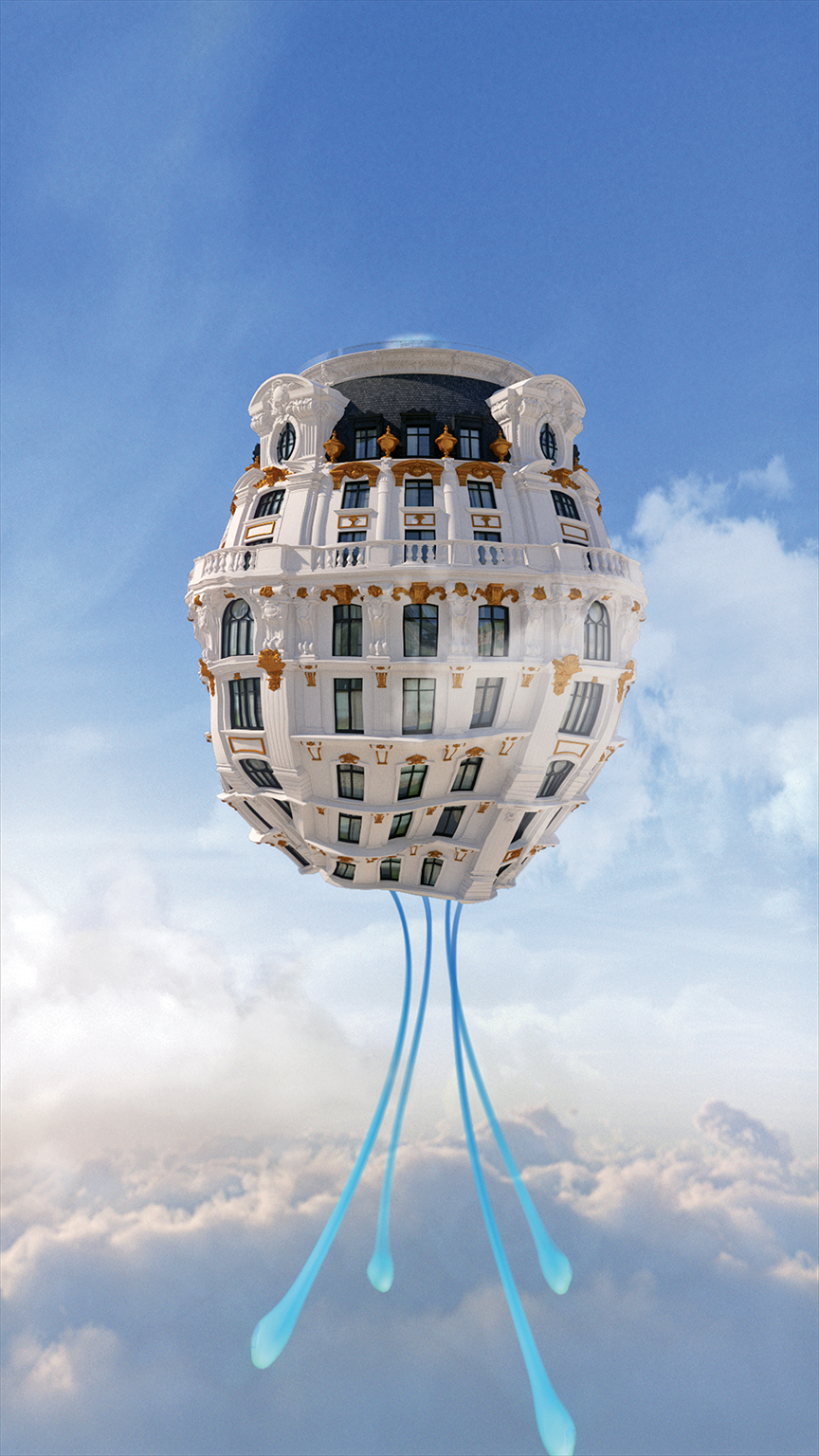
JONATHAN MONAGHAN (US)
The Phoenix and the Medusa (2018), Video, 7 min 69 sec, Edition of 30, Niio Commission Series.
With systems and platforms, from artificial intelligence to online-based forums, both artists and curators now are developing larger platforms and databases to contribute toward. As well as an educator, Graham is co-founder and editor of the Curatorial Resource for Upstart Media Bliss, or CRUMB, a resource for curators of new media art that aims to help overcome any challenges presented from this rise in digital art, from installations to networks of artists and individuals versed in these practices.
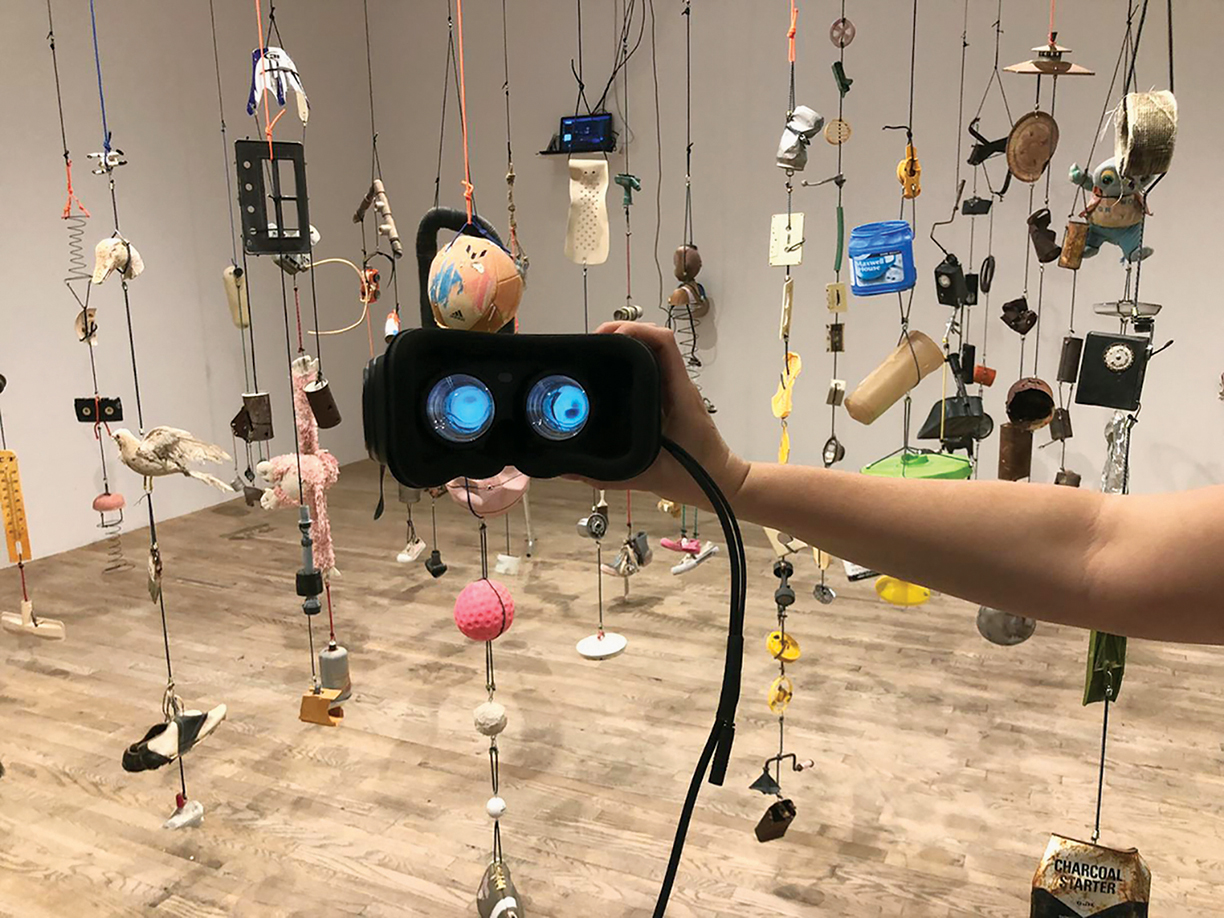
PERRY HOBERMAN
Suspensions (2018), VR and mixed reality installation, Postmasters April 2018.
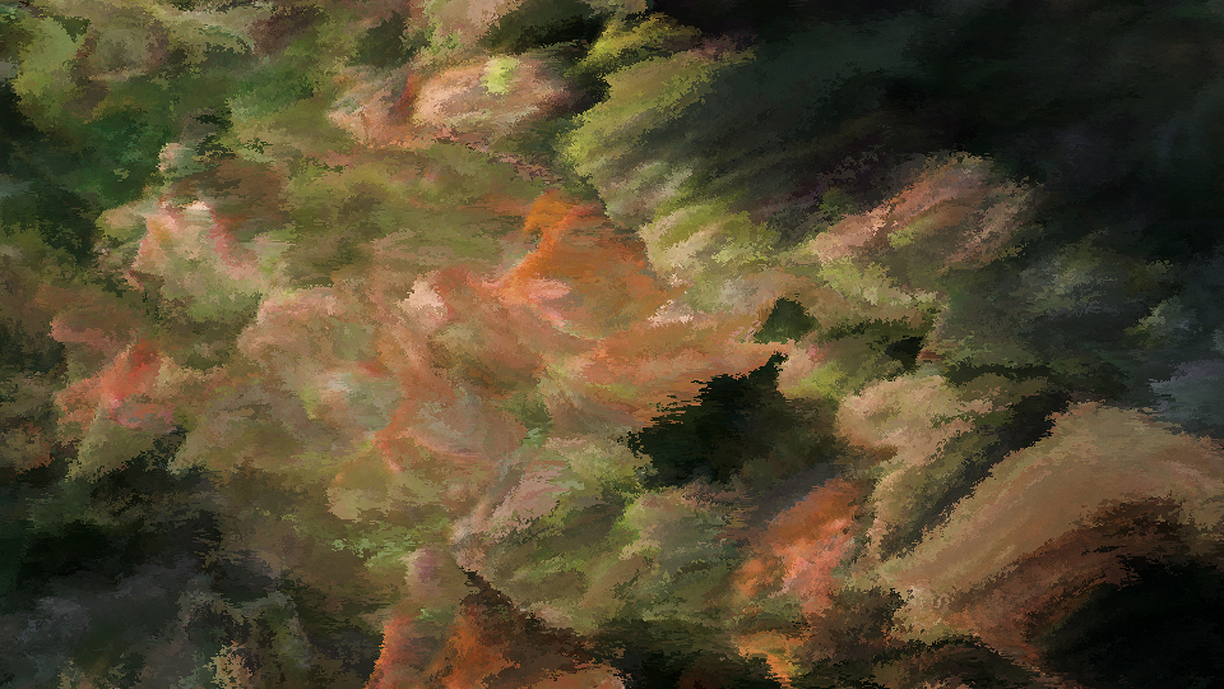
QUAYOLA (UK)
Camouflage (2018), Moving Image, 6 min 4 sec, Edition of 30, Niio Commission Series
On the luxury spectrum of art curation, Niio is a brand integrating digital art and technology-driven forms of collection and distribution that surges past the limitations of traditional artwork. Niio is an art and tech company aimed to enable the exposure of digital artwork in a time that to the company feels like a fourth industrial revolution.
“Art has always reflected the world we live in,” says Rob Anders, CEO and co-founder of Niio, “and artists will create their art with any tool they can access.” In today’s world, that tool has come to be technology. Anders, who understands the eclectic background of digital art from conceptual and video art, wanted to help designers and architects best fit homes with the art of today, and after speaking with top galleries he found that what’s really needed are new models of both the business and technological side that reach a broader audience — even better: one with a subscription.
“We envision a world where in homes people will have more digital canvases with interactive or immersive works, all on a centralized connected system that can very easily change,” Anders says, with access to top artists in the world in this ecosystem of artists, galleries and collections all on the Niio platform. Luckily, the CEO notes, the technology is “already there,” from artificial intelligence in devices like Amazon’s Alexa devices to smart televisions, all devices that can easily work with the Niio platform to display digital artwork.
To those interested in having access to the “world’s finest art accessible on-demand,” Niio is open as a limited edition membership at about $5,000 a month, with access to curated exhibitions and collections, or art “playlists” of over 7,500 art pieces on the platform that can be easily changed and displayed on devices like smart TVs, projectors, screens, et cetera, which can be installed by Niio technicians as well.
“Art curation is telling a particular story,” he says. “In order to give people these digital works, it’s not about just finding the individual works, it’s about giving people the ability to learn about the works they are looking at,” he says.
New York designer Aimée Wilder explores Eudaimonia, a Greek word commonly translated as happiness or “human flourishing,” in her collection of wallpapers, fabrics, rug and accessories. From the effects of the moon on the evolution of the natural world to the impact of astrological phenomenon, Wilder captures the many ways surroundings can influence our psychological state, and contribute to overall wellness.
“This collection was born through finding balance and stability in my own life,” says Wilder. “Once I learned that living to work instead of working to live, along with incorporating methods like Vedic meditation and natural healing into my daily routine, was able to create a peaceful environment around me, I hoped to thoughtfully reflect that feeling in each design.”
Eudaimonia consists of two wallpaper and fabric patterns, Pyramide du Soleil and Earthlight, with an additional rug pattern, Eclipse. All three patterns reflect the natural balance between the Earth, the Sun, and the Moon, evoking the beauty of cosmic balance. With this collection, Wilder introduces a new construction for commercial fabrics, tested for 50,000 double rubs and available with a range of protective coatings including anti-microbial and stain coating. In addition, for the first time, Wilder will offer wallpaper printed in Brooklyn, New York, where she resides and operates her design studio.
Pyramide du Soleil is a subtly optical pattern manifesting the ancient Sun’s shadow and its balance with the earth, Pyramide du Soleil features pyramid and Sun as they represent the illusive quality of time. It integrates pyramids and circles with sophisticated diagonals and horizontal stripes, inspired by the continuous synchronicity that exists between the earth and the Moon.
Earthlight focuses on the waxing and waning cycles of the Moon’s phases in an eye-catching, geometric pattern across wallpaper and fabric design. Named for the scientific phenomenon in which sunlight reflected from Earth’s surface indirectly illuminates the otherwise dark side of the Moon, Earthlight is sure to brighten any space.
Eclipse showcases the inversion of colors in this rug design suggests the effects of an Eclipse, a harbinger of change in the daily life that acts as a guiding hand when questioning one’s path. With a boldness that invokes a new take on a vintage aesthetic, the Eclipse rug comes in a range of warm tones that will add a welcoming touch to a room.
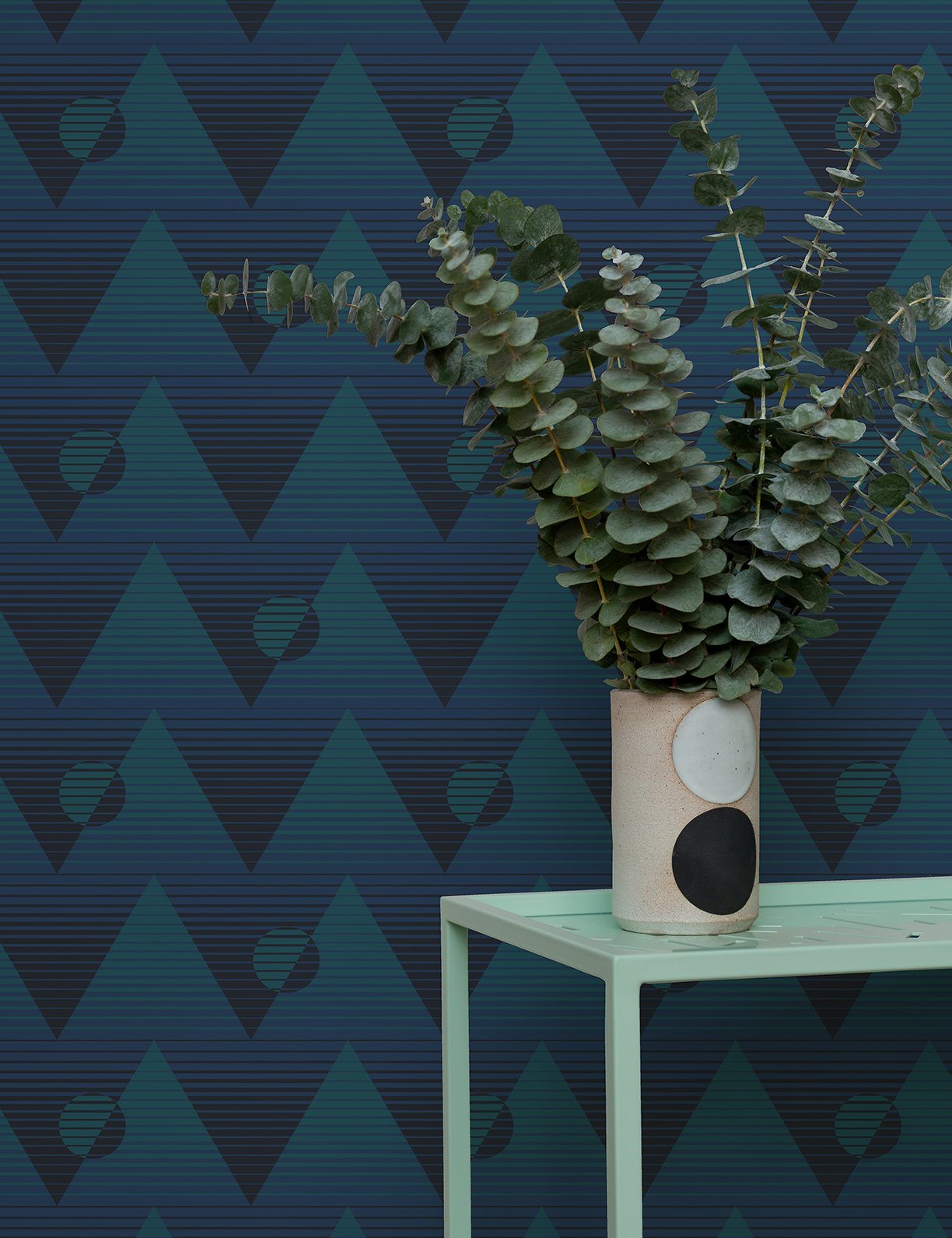
Pyramide du Soleil
Photos courtesy Aimee Wilder.

Eclipse
Photo by ©Dylan Chandler 2018.
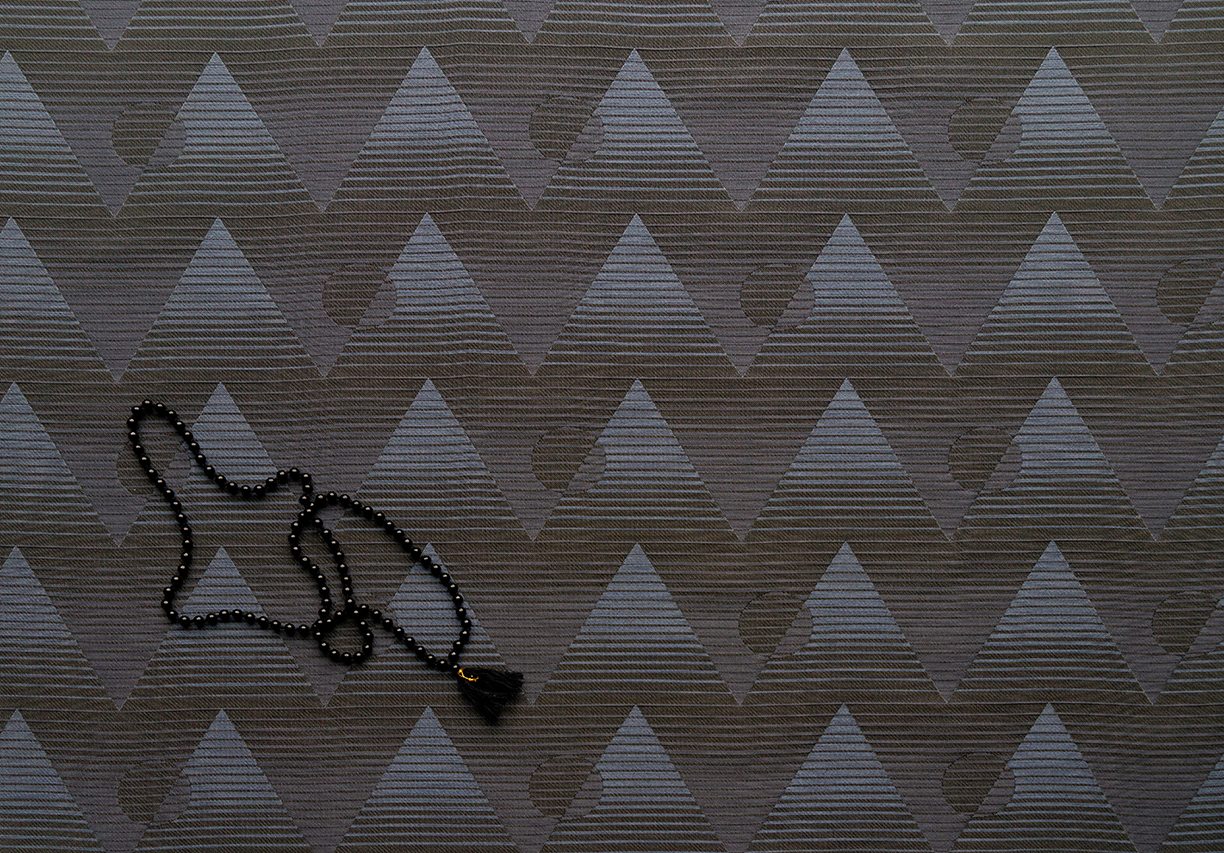
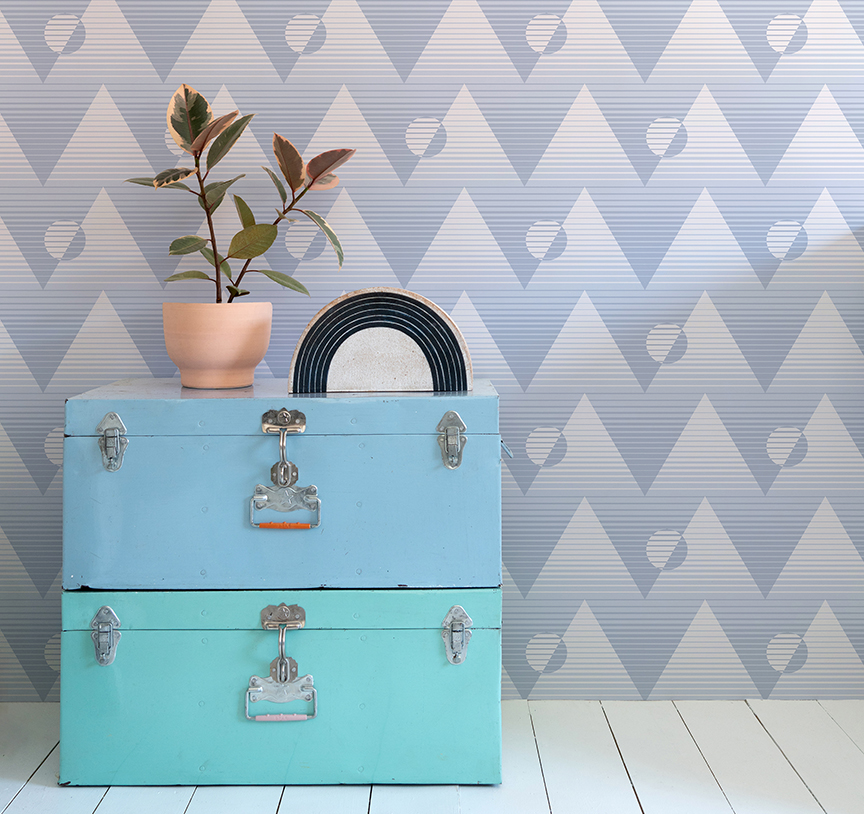
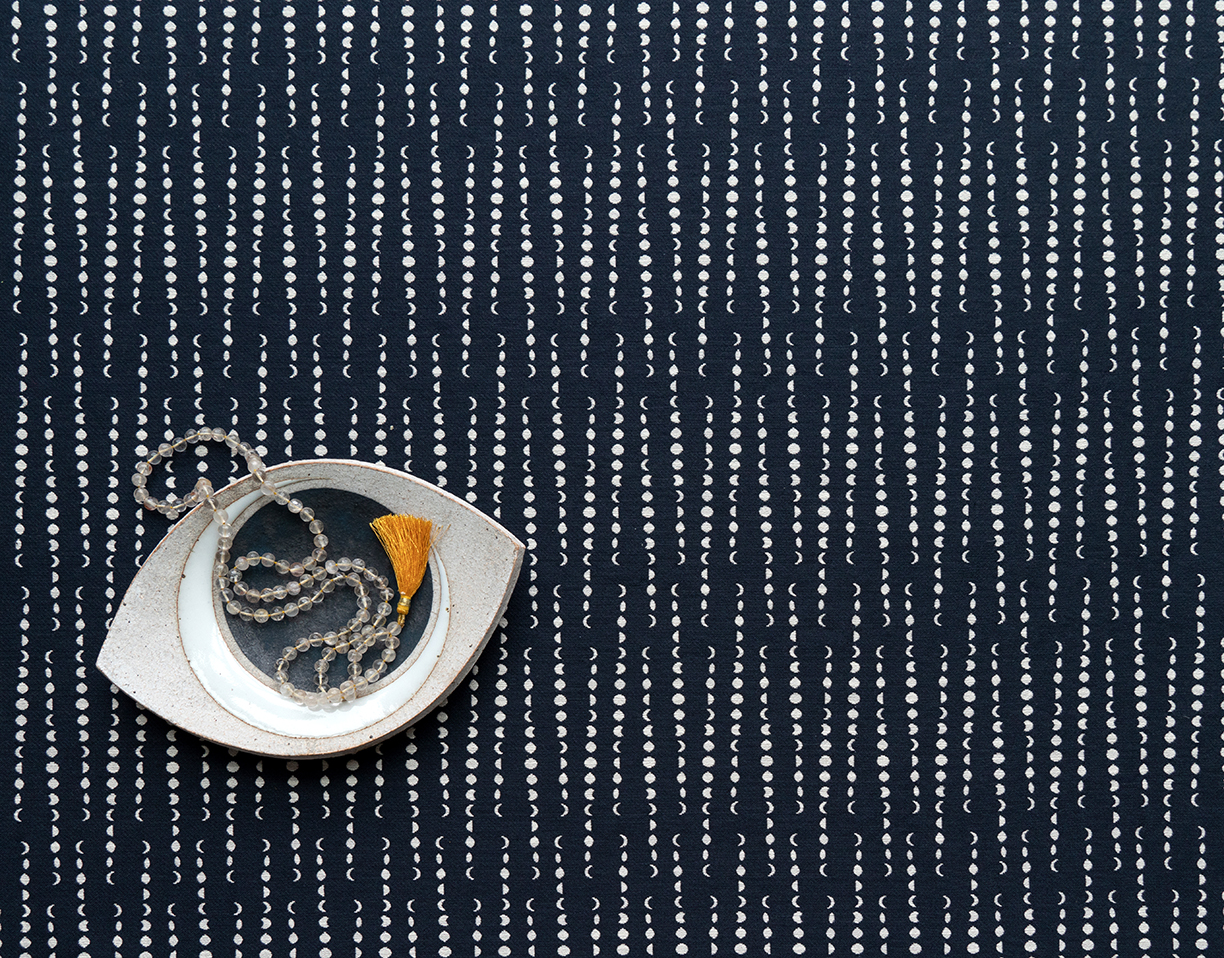
Earthlight
Photos courtesy Aimee Wilder.
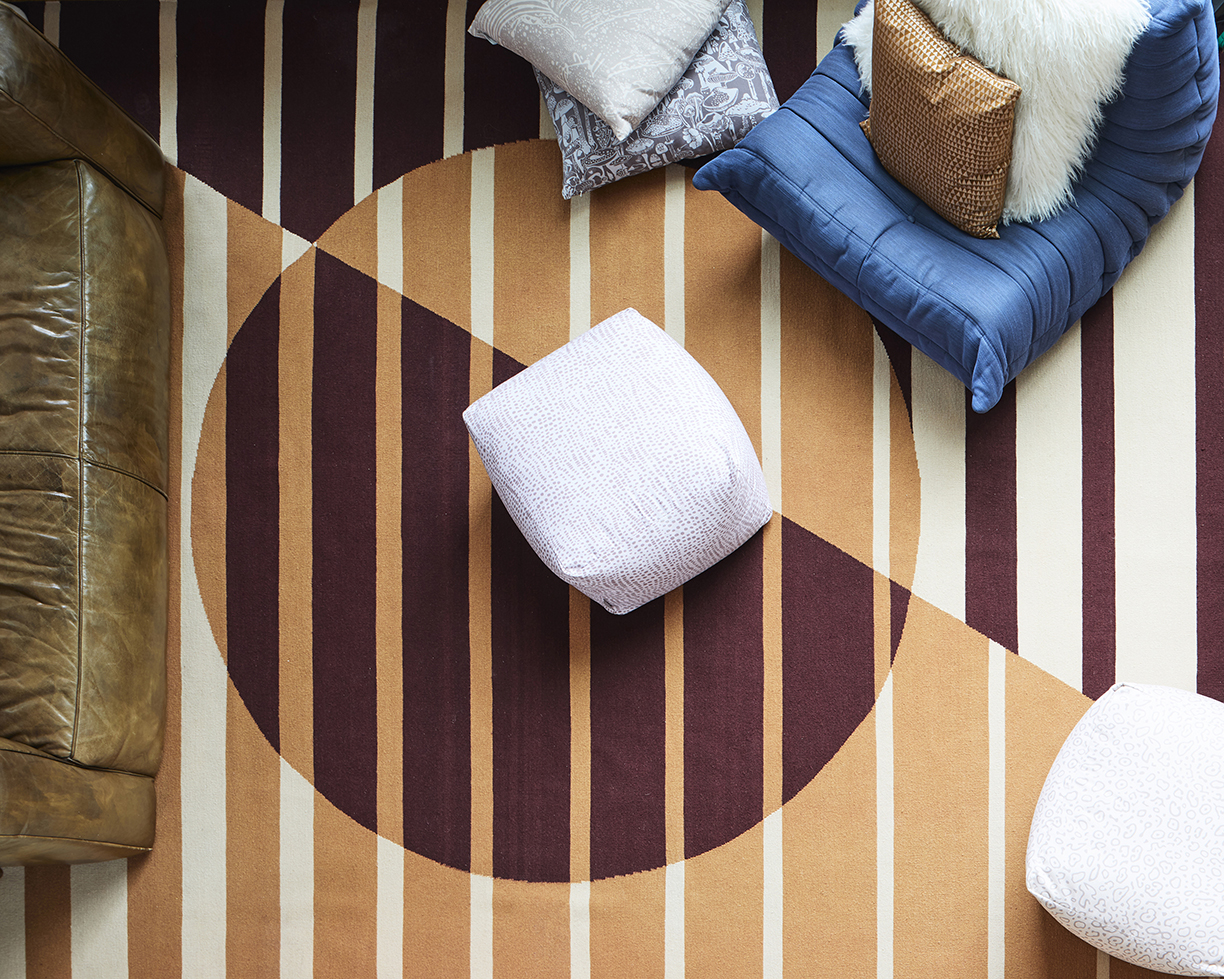
Renowned artist Tristan Eaton, in partnership with The Kaufman Organization, has painted a 100-foot mural celebrating a NoMad icon and the history of the neighborhood during the Gilded Age.
The 97-by-40-foot mural portrays Evelyn Nesbit, known as a 20th Century fashion icon appearing on the covers of Vanity Fair, Cosmopolitan, and Harper’s Bazaar. Evelyn was highly sought after as a model by the top brands of the day, embodying the Gilded Age with the ascension of fashion photography and setting the standard for female beauty. An upscale unveiling party for the mural was held on May 16 in New York City.
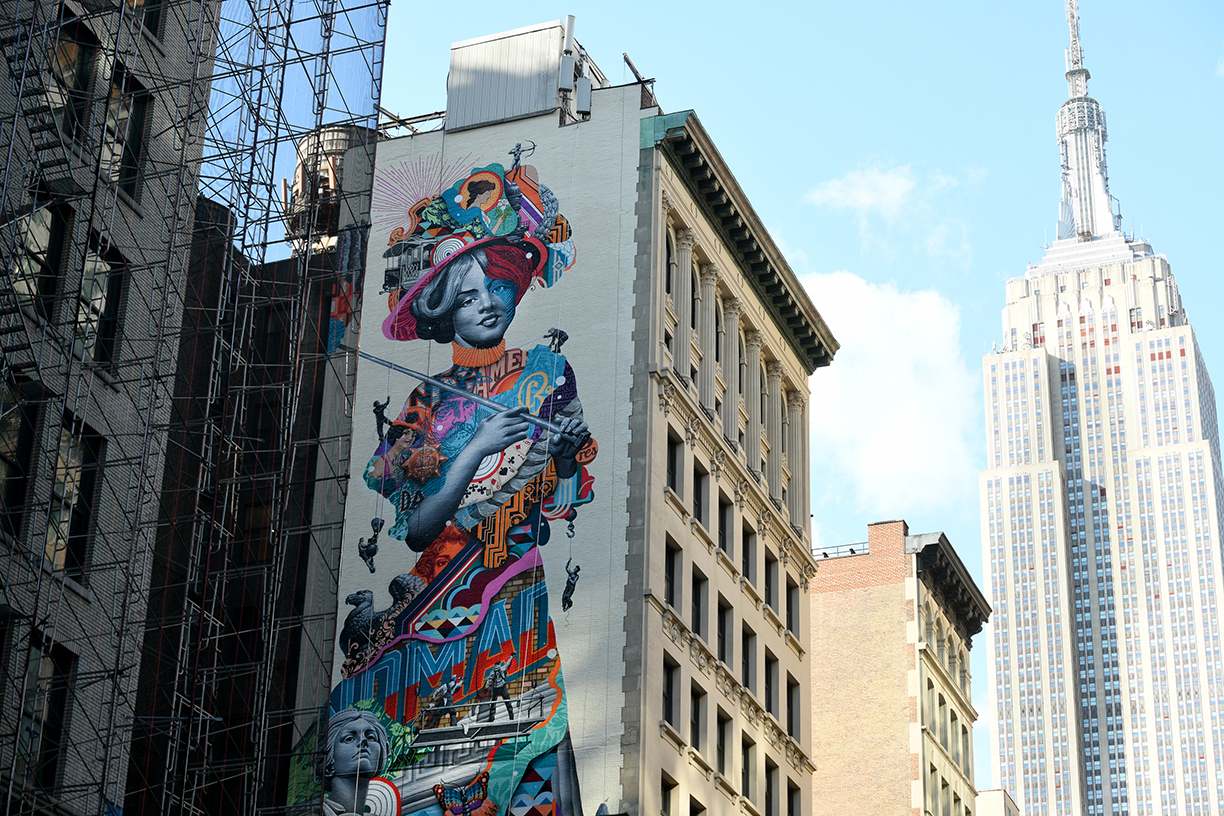
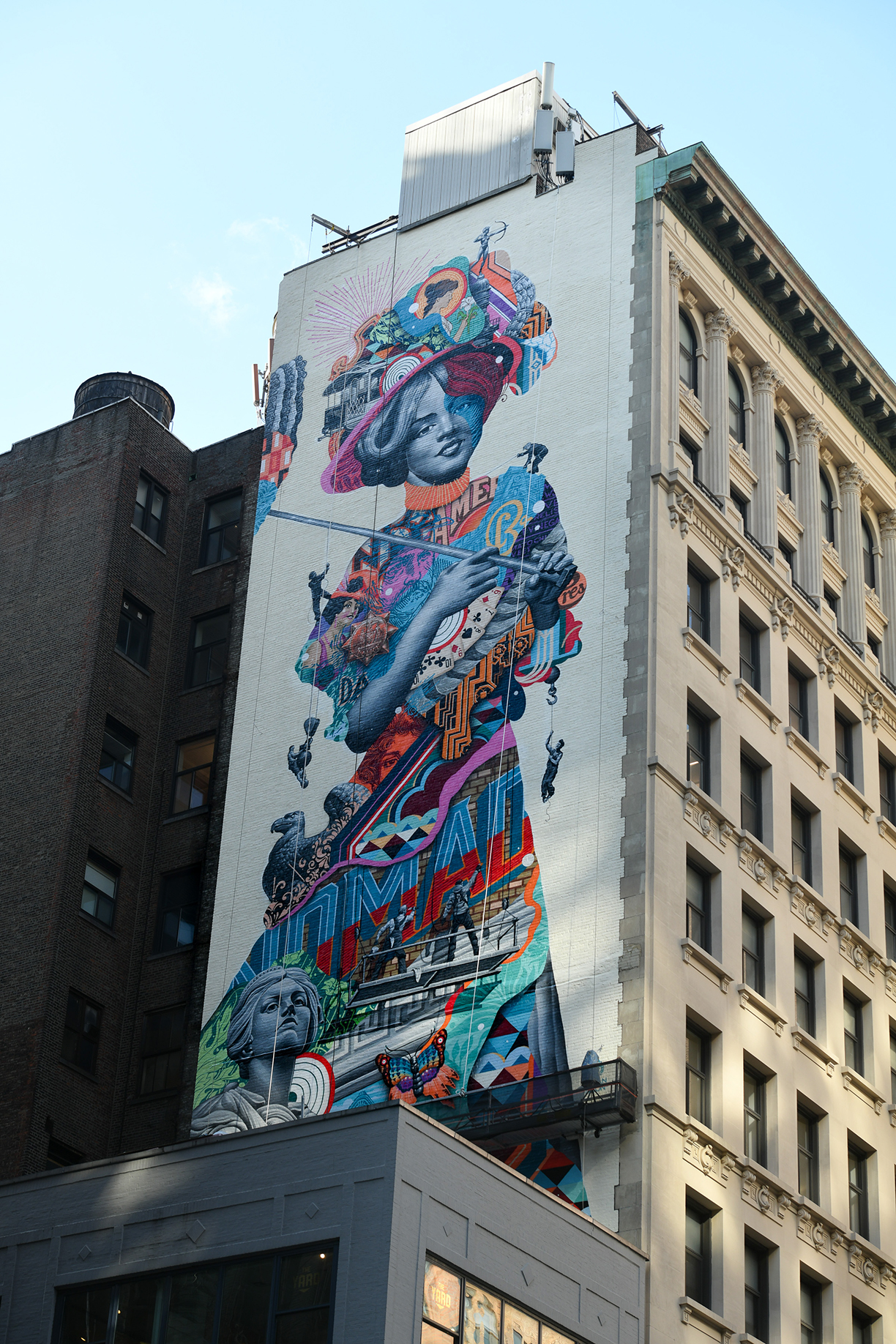
Various images depicting the rich history of the NoMad area, the original Madison Square Garden and New York City during the Gilded Age are interwoven in a collage throughout the mural. The images were curated with the assistance of a New York City historian.
The Kaufman team worked closely with local historical and landmark preservation experts to ensure the mural would accurately and appropriately represent Ms. Nesbit’s story and the history of the NoMad area.
Tristan Eaton has been a leader in the advertising and commercial art spheres and is regularly commissioned by a roster of clients that include Nike, Versace, and even Barack Obama. Eaton’s work can also be seen in the Museum of Modern Art’s permanent collection.





